
On View March 24, 2024

OFFICERS
Cover
Joyce J. Scott. Buddha Gives Basketball to the Ghetto (Detail). 1991. Courtesy of Private Collection. © Joyce Scott, courtesy Goya Contemporary. Photo by Dhanraj Emanuel


On View March 24, 2024

OFFICERS
Cover
Joyce J. Scott. Buddha Gives Basketball to the Ghetto (Detail). 1991. Courtesy of Private Collection. © Joyce Scott, courtesy Goya Contemporary. Photo by Dhanraj Emanuel
James D. Thornton, Chair
Clair Zamoiski Segal, Immediate Past Chair
Darius Graham, Vice Chair
Elizabeth Hurwitz, Vice Chair
John Gilpin, Vice President & Treasurer
Fiona Ong, Secretary
David Wallace, Vice President
John Meyerhoff, Vice President
Ellen Dame, Vice President
Virginia Adams, Assistant Vice President
Amy Gould, Assistant Vice President
EXECUTIVE COMMITTEE
James D. Thornton, Chair
Clair Zamoiski Segal, Immediate Past Chair
Darius Graham, Vice Chair
Elizabeth Hurwitz, Vice Chair
John Gilpin, Vice President & Treasurer
Fiona Ong, Secretary
David Wallace, Vice President
John Meyerhoff, Vice President
Ellen Dame, Vice President
Virginia Adams, Assistant Vice President
Amy Gould, Assistant Vice President
Patricia Lasher
Kwame Webb
Sam Callard
Amy Elias
Katherine Schulze
TRUSTEES
Virginia K. Adams
Michael Brown
Adam Burch
Sharon Butler
Sam Callard
Beverly Bentley Carroll
Ellen R. Dame
Amy Elias
Nupur Parekh Flynn
Denise Galambos
John A. Gilpin
Joanne Gold
Amy Gould
Darius Graham
Kim Mumby Green
Nancy Hackerman
Pamela Hoehn-Saric
Elizabeth Hurwitz
Sherrilyn Ifill
Lori N. Johnson
Patricia Lasher
George McCulloch
John Meyerhoff
Sheela Murthy
Fiona Ong
Antoinette Peele
George Petrocheilos
Steven Pulimood
Paul Oostburg Sanz
Mark Saudek
Katherine Schulze
Clair Zamoiski Segal
Lynn Selby
Michael Sherman
Stuart O. Simms
Anne L. Stone
James D. Thornton
David W. Wallace
John Waters
Kwame Webb
HONORARY TRUSTEES
Alexander C. Baer
Rheda Becker
Constance R. Caplan
Kathryn (Lynn) Deering
Nancy L. Dorman*
Janet E. Dunn
Sandra Levi Gerstung
Katherine M. Hardiman
Margot W.M. Heller
Louise P. Hoblitzell
Freeman A. Hrabowski III
Mary B. Hyman
Patricia H. Joseph
Susan B. Katzenberg
Jeanette Kimmel
Frederick Singley Koontz
Jeffrey A. Legum
Amy Frenkil Meadows
James S. Riepe
Frederica K. Saxon
Jean Silber
Louis B. Thalheimer
David Warnock
Ellen W.P. Wasserman
Sylvia de Cuevas
Monroe Denton
Barbara Duthuit
Phillips Hathaway
Joseph Holtzman
Edward S. Pantzer
The Honorable Bob Cassilly
The Honorable Edward Rothstein
The Honorable John Olszewski
The Honorable Steuart Pittman
The Honorable Wes Moore
The Honorable Bill Henry
The Honorable Calvin Ball
The Honorable Brandon M. Scott
The Honorable Nick Mosby
Christopher S. Celenza, James B. Knapp Dean, KSAS
*Nancy L. Dorman passed away on January 12, 2024, after serving for 21 years on the Board of Trustees. See page 5 for the Board’s Resolution commemorating Nancy, and page 22 for reflections on Nancy’s extraordinary legacy.
Editors COLLEEN KENNEDY
JESSICA NOVAK
Contributors ANNE BROWN
Design and Production NICOLE MILLER
Image Services & Rights TAYLOR ANDREWS
ANA SALAS
Images of BMA Staff CHRISTOPHER MYERS
Baltimore Museum of Art
10 Art Museum Drive
Baltimore, MD 21218-3898
HOURS & ADMISSION
Wednesday, Friday through Sunday: 10 a.m. to 5 p.m.
Thursday now open from 10 a.m. to 9 p.m.
Closed Mondays and Tuesdays, New Year’s Day, Juneteenth, July 4, Thanksgiving, and Christmas Day.
Free general admission—for everyone, every day!
There may be a charge for certain special exhibitions.
BMA Members receive unlimited free admission to ticketed exhibitions.
Ongoing support for free admission at the BMA has been provided through generous endowment gifts from the Cohen Family Fund for Free Admission, Lord Baltimore Capital Partners, LLC, Mary J. and James D. Miller, the James S. Riepe Family Foundation, and the DLA Piper Fund.
The BMA would like to thank the following donors for their combined generosity: City of Baltimore, Citizens of Baltimore County, and Howard County Government and Howard County Arts Council. Major support is also provided in part by the Maryland State Arts Council.
ACCESSIBILITY
The Zamoiski East Entrance, the Museum, and the Sculpture Garden are wheelchair-accessible. A limited number of wheelchairs are available for use free of charge. Van-accessible parking spaces are available in the BMA East and West Lots. Please check in at the Welcome Desk in the Lobby upon arrival.
TTY/HCO 1-800-735-2964
artbma.org
Facebook.com/artbma
Instagram.com/baltimoremuseumofart
Twitter.com/artbma
YouTube.com/artbma
CONTACT US
Membership: 443-573-1800
General Information: 443-573-1700
General operating support is provided in part by the City of Baltimore, Maryland State Arts Council, citizens of Baltimore County, and the Howard County Government and the Howard County Arts Council.
The Citizens of Baltimore Count y
BMA Today is published three times a year for Members of the Baltimore Museum of Art. ©2024 Baltimore Museum of Art
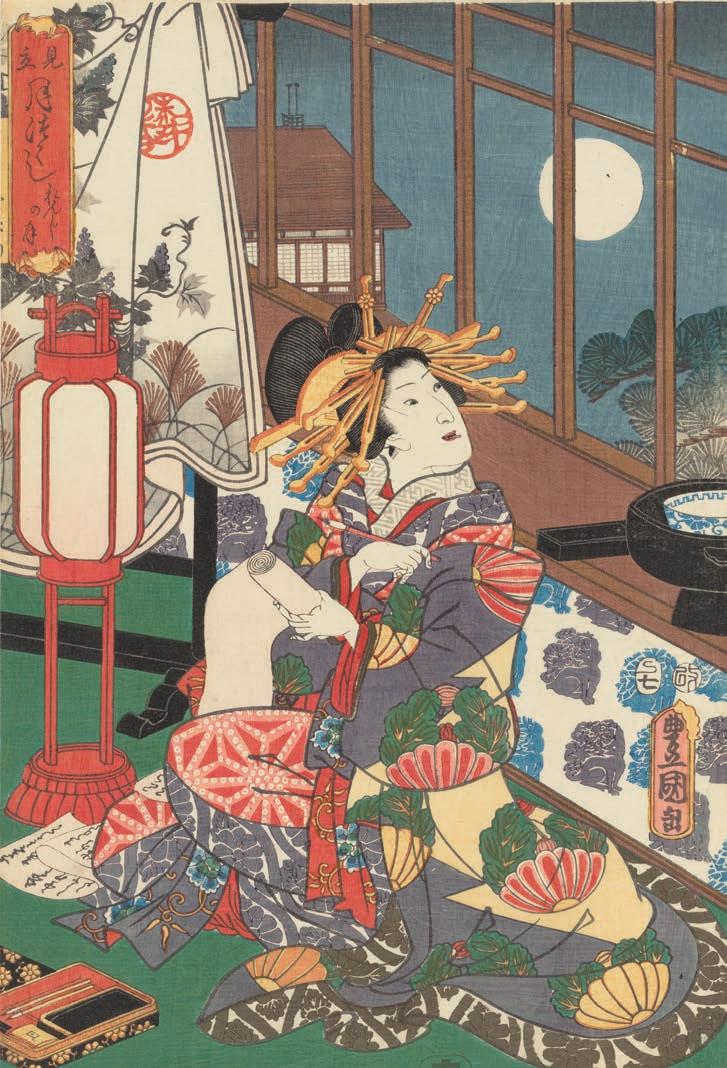
In soft tones, this woodcut shows a courtesan–a female sex worker skilled in the traditional arts and refined entertainment–looking over her shoulder at the full moon. Having paused in writing a long letter to her evening’s companion, she looks up, her writing box on the floor nearby. Created by prolific artist Utagawa Kunisada (1786–1865), the woodcut is from a series of mitates–or parody prints that pair kabuki actors and moonlit scenes–depicting the actor Onoe Kikugorô IV (1808–1860), a specialist in female roles, portraying the famous courtesan Tamagiku (1702–1726). Her life was celebrated in a play that was first staged at the time of this woodcut’s publication.
Considered one of the most popular and successful designers of woodcut prints during the later Edo period (1603–1868), Kunisada was a member of the Utagawa school, a prestigious multi-generation studio, where he developed his lifelong fascination with and expertise in creating actor portraits and scenes from kabuki theater–classical Japanese theater known for its heavily stylized performances, glamorous costumes, and elaborate make-up. His other subjects were as varied as sumo wrestlers, erotica, and literary depictions from The Tale of Genji, the well-known work of Japanese classical literature.
Moon of the Lattice Window, 1857, is one of three Japanese Edo Period woodcuts currently on exhibition that relate to calligraphy and writing. All three woodcuts also feature well-known kabuki actors, highlighting the relationship between the spoken and written word.
The reinstallation of the Asian galleries shows cultural, technological, and material exchanges and influences by juxtaposing works from India, Indonesia, Iran, and Türkiye alongside works from East Asia, primarily China. Many works are on display for the first time in decades.
The woodcut prints also resonate with the exhibition The Art of Pattern: Henri Matisse and Japanese Woodcut Artists opening June 2, 2024, in the Jay McKean Fisher Gallery. Matisse may have been influenced by the artistry of Japanese woodcuts, such as the work of Kunisada, which share a connection with energetic patterns, color palette, and themes.
This installation is made possible by the Victor J. Schenk Trust, the E. Rhodes and Leona B. Carpenter Foundation, and Amy L. Gould and Matthew S. Polk, Jr.

A year leading the Baltimore Museum of Art? Time has flown! Among the highlights are Raúl de Nieves’ smile-inducing Robert E. Meyerhoff and Rheda Becker lobby commission, the newly renovated Patricia and Mark Joseph Education Center, landmark exhibitions such as The Culture and Making Her Mark and the reopening of BMA Lexington Market. Slowly but surely, the BMA is embracing more of our local and global communities while becoming a haven of joy, contemplation, and leisure for this city we all love.
This spring we are thrilled to open a dazzling exhibition celebrating the five-decade career of Joyce J. Scott. An internationally acclaimed visual and performing artist, Joyce challenges stereotypes and injustices, and conjures creative communities with her irrepressible spirit and intellect. Best of all, Joyce is a proud Baltimorean who still lives and works in her hometown. Longtime BMA Members who remember the Kickin’ It with the Old Masters exhibition will appreciate the evolution of her work over the ensuing decades. Also this spring, we are shining a spotlight on Joyce’s mother, Elizabeth Talford Scott. No Stone Left Unturned: The Elizabeth Talford Scott Initiative brings together five museums (including the BMA) and four universities across Baltimore for a community-wide celebration of this extraordinary artist in her own right.
In April and May, we are launching Preoccupied: Indigenizing the Museum, a nearly year-long series of exhibitions and programs that reveal the rich and polyphonic artistry of contemporary Native artists, and offer insights into their histories, heritage, and world-making. For far too long, the voices of Native artists and arts leaders have been absent from Western institutions. Preoccupied is an important step in our ongoing work to rectify this omission and give prominence to Indigenous thinkers and creatives.
Lastly, the BMA’s Board of Trustees and many others are mourning the loss of Nancy L. Dorman. For several decades, Nancy was an integral partner in the leadership of this institution, having served on nearly every Board committee. With a quiet insistence and wisdom that centered on care, she nurtured an unshakeable idealism in this Museum and Baltimore City. We will greatly miss Nancy’s dedication to our mission, her kind consideration for her Board colleagues and BMA staff, and her dreams for what art and a museum can do for all.
Asma Naeem
Dorothy Wagner Wallis Director
The Board of Trustees of the Baltimore Museum of Art records its deep sadness at the passing of Honorary Trustee Nancy L. Dorman.
Ms. Dorman served on the Board of Trustees from FY03-FY10, FY12-FY22, and became an Honorary Trustee in FY23. Over the course of her service, she participated on nearly twenty committees, notably as an exceptionally thoughtful Chair of the Governance Committee, where she truly embraced the BMA’s vision by encouraging more diverse participation and perspectives on the Board. Mostly recently, Ms. Dorman participated on the Host Committee for the BMA Gala: A Night of Creativity & Discovery and was a lead sponsor for the event.
Ms. Dorman’s impact on the Museum will live on through the Dorman/ Mazaroff Contemporary Art Endowment Fund, and the Nancy Dorman and Stanley Mazaroff Center for the Study of Prints, Drawings and Photographs. In addition to these incredible commitments, she and her husband Stanley Mazaroff have generously promised 90 artworks—including sculpture, assemblage, painting, works on paper, and photography—from their collection to the Museum.
Outside of her service on the BMA’s Board of Trustees, Ms. Dorman served on the Board of Directors for the Enoch Pratt Free Library as well as the Pratt Advisory Council. She also co-chaired the Art Seminar Group, a local arts study group, and served on the board of the Maryland SPCA.
Ms. Dorman was a dedicated advocate, generously giving her time, wisdom, and energy to all her commitments. Her loss will be felt by the Museum, Baltimore City, and beyond.
The Board of Trustees extends its deepest sympathy to Stanley Mazaroff, and her brothers Steven Wayne Dorman and Ray Robinson Dorman.
For the second presentation of the Robert E. Meyerhoff and Rheda Becker Biennial Commission, multimedia artist Raúl de Nieves has transformed the two floors of the Clair Zamoiski Segal and Thomas H. Segal East Lobby into an immersive world celebrating transformation. His works draw upon diverse influences, such as Mexican mythology, folklore, and craft traditions; queer club and punk scenes; Catholic iconography; and natural sciences. The installation will be on view through May 4, 2025.

“We lay one bead at a time and the accumulation becomes meditation. The beadwork is a labor of love, so the time is reflective of a personal journey.”
Raúl de Nieves

27 Number of faux-stained glass windows depicting cicadas, monarch butterflies, and a crested caracara falcon that cast vibrant colors throughout the lobby with the passing of the sun. Each windowpane is approximately 4 x 4 feet.

999 Number of handcrafted resin flies climbing the wall in the lower lobby space for the artwork Humility (999). Each translucent insect is filled with small colorful beads and strands of the artist’s hair.
4 Number of horse-headed figures with human bodies wearing stilettos in the artist’s Mares series. While the title of the series recalls the term for female horses, it also hints at the original meaning of “nightmare” as a demon who creates bad dreams. Two of the works, The Mare of Threes and The Mare of Nines, are on exhibit: the numbers indicate significant years in de Nieves’ life.
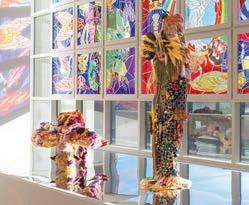
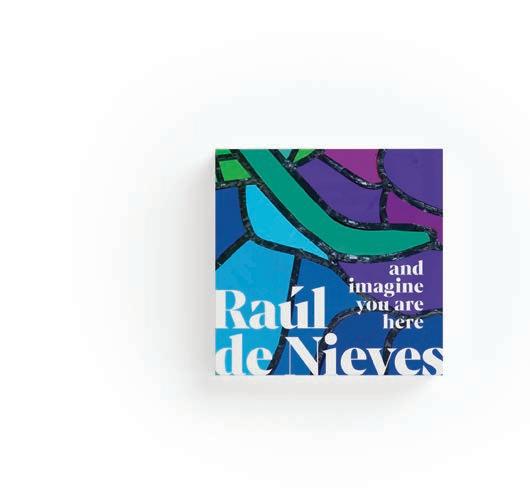
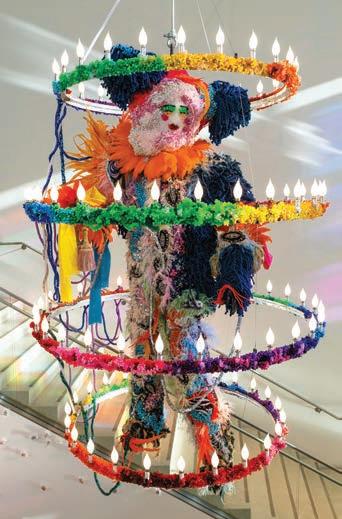
a cocoon.
24 Stunning images of the vibrant installation in the exhibition catalog. The new publication features an interview with the artist, a commissioned short story, and curatorial essay.
108 Lightbulbs in The Beautiful Nightmare, the chandelier depicting a figure encased in Raúl de Nieves: and imagine you are here is generously supported by the Robert E. Meyerhoff and Rheda Becker Biennial Commission. Far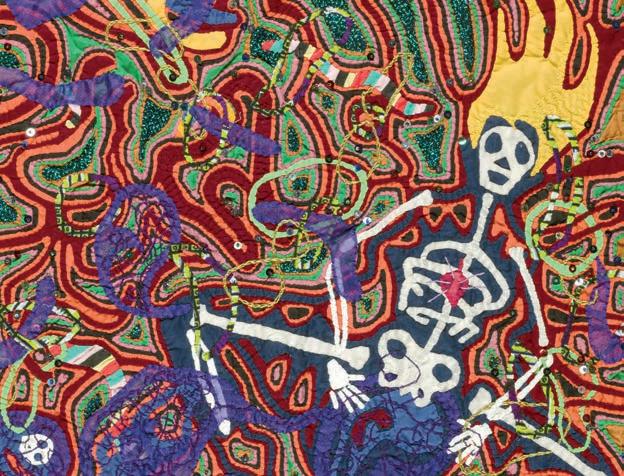
March 24, 2024–July 14, 2024
Best known for her virtuosic use of beads and glass, Joyce J. Scott’s works across all media beguile viewers with beauty and humor while confronting racism, sexism, ecological devastation, and complex family dynamics. This 50-year career retrospective co-organized with the Seattle Art Museum features nearly 140 objects ranging from woven tapestries and soft sculpture of the 1970s and audacious, genre-defying performances of the 1980s to sculptures of astonishing social force and formal ingenuity across her career. For five decades, she has upended hierarchies of art and craft, insisting that artistic expression is that “extra inch of life” that nourishes the soul even in the most challenging circumstances. The exhibition also features a participatory weaving and storytelling environment, conceived by the artist as a hub for structured and informal programming. An expansive scholarly catalog accompanies the exhibition.
Co-curated by Cecilia Wichmann, BMA Associate Curator of Contemporary Art, and Catharina Manchanda, SAM Jon and Mary Shirley Curator of Modern and Contemporary Art, with support from Leslie Rose, Joyce J. Scott Curatorial Research Assistant.
This exhibition and national tour are made possible by substantial grants from the Ford Foundation, Henry Luce Foundation, Terra Foundation for American Art, and The Andy Warhol Foundation for the Visual Arts.
National Presenting Sponsors
In Baltimore, the exhibition is also supported by the Alvin and Fanny B. Thalheimer Exhibition Endowment Fund, The Dorman/Mazaroff Contemporary Endowment Fund, the Suzanne F. Cohen Exhibition Fund, Bank of America, Wagner Foundation, Joanne Gold and Andrew Stern, The Jacques and Natasha Gelman Foundation, Transamerica, the National Endowment for the Arts, the Clair Zamoiski Segal and Thomas H. Segal Contemporary Art Endowment Fund, Goya Contemporary Gallery and Martha Macks-Kahn, The Coby Foundation, Ltd., and the American Craft Council.
On view in the Alvin and Fanny B. Thalheimer Galleries and The Saidie A. May Wing
June 2, 2024–January 5, 2025
This exhibition pairs Henri Matisse’s compositions with those of 19th-century Japanese woodcut artists to explore the global appeal of color and pattern across space and time. The Art of Pattern: Henri Matisse and Japanese Woodcut Artists features several paintings and prints by Matisse from the 1920s, with posed models and heavily patterned interior backgrounds, reflecting the artist’s interest in layering his works from this period with decorative items from around the world. He incorporated prints and patterns into his compositions to create and define spaces, constructing a theatrical setting for his subjects to inhabit. In contrast to Matisse, Japanese woodcut artists working in the 19th century depicted their female subjects more often in public spaces clothed in layers of ornately decorated robes. Prints by some of Japan’s most popular woodcut artists—Kikugawa Eizan, Keisai Eisen, and Utagawa Kunisada—show glamorized courtesans and entertainers frequently depicted as though on parade. The exhibition also features a vibrant sash supplementing those shown in the prints.
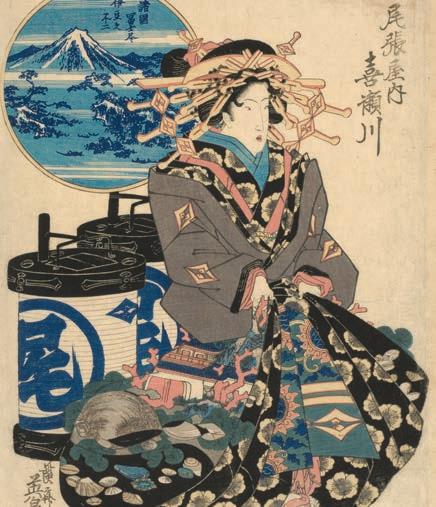
This exhibition is supported by the E. Rhodes and Leona B.
On view in the Jay
Above: Keisai Eisen, Mt. Fuji from Izu Province; The Courtesan Kisegawa of the Owariya Brothel (Detail). Early 1830s. From the series, Views of Fuji from Various Provinces (Shokoku Fuji tsukushi) Baltimore Museum of Art: Gift from the Estate of Julius Levy, BMA 1933.67.1 Above: Joyce J. Scott, Nuclear Nanny (Detail). 1983-1984. Baltimore Museum of Art, The Amalie and Randolph Rothschild Acquisition Fund, BMA 1984.63., © Joyce Scott, courtesy Goya Contemporary Gallery. Photo by Mitro Hood Co-curated by Frances Klapthor, Associate Curator of Asian Art, and Katy Rothkopf, The Anne and Ben Cone Memorial Curator of the Ruth R. Marder Center for Matisse Studies. Carpenter Foundation. McKean Fisher Gallery in the Ruth R. Marder Center for Matisse StudiesApril 21, 2024–February 16, 2025
The artwork, perspectives, and histories of Native artists, scholars, and community members are at the center of Preoccupied: Indigenizing the Museum, a major BMA initiative. The wide-reaching project seeks to begin addressing the historical erasure of Indigenous culture by arts institutions while creating new practices for museums.
The expansive Preoccupied project extends into the galleries and beyond with public programs, nine exhibitions, staff training, and new interpretive texts for artworks throughout the Museum. The curatorial team worked closely with Native artists, curators, and Baltimore-region residents on a community advisory panel to frame the questions this project would ask. In the earliest stages of the initiative, all Preoccupied project participants were invited to an “unconference,” a weekend-long retreat with the exhibitions’ curators, where they discussed Native visibility in the face of colonial oppression.
“Preoccupied radically centers Native perspectives in a space that has often overlooked or erased that community: encyclopedic museums,” shares the project’s co-curator Dare Turner (Yurok Tribe), Curator of Indigenous Art at the Brooklyn Museum. “It challenges all museums to interrogate their colonial roots and make space for new ways of thinking, learning, and being.”
Preoccupied emphasizes that Native people have created meaningful art since time immemorial and that Native communities thrive to this day. Beyond its large-scale exhibition program, the BMA’s celebration of Native art and artists offers a framework that the Museum can carry forward for future exhibitions and community engagement.
A catalog published by the BMA and distributed by the University of Washington Press will be available in May 2024. Fifty vivid, detailed images of works from the exhibitions share pages with personal reflections, a comic featuring fictional Indigenous hero Pueblo Jones, insights from Native artists whose works are featured in the book, newly commissioned poetry, and scholarly and curatorial considerations.
On view this spring:
Dyani White Hawk: Bodies of Water; Don’t wait for me, just tell me where you’re going; Caroline Monnet: River Flows Through Bent Trees; Finding Home; Enduring Buffalo; and Illustrating Agency
Opening this summer, solo exhibitions featuring works by: Nicholas Galanin (Lingít and Unangax̂), Laura Ortman (White Mountain Apache), and Dana Claxton (Wood Mountain Lakota First Nations).
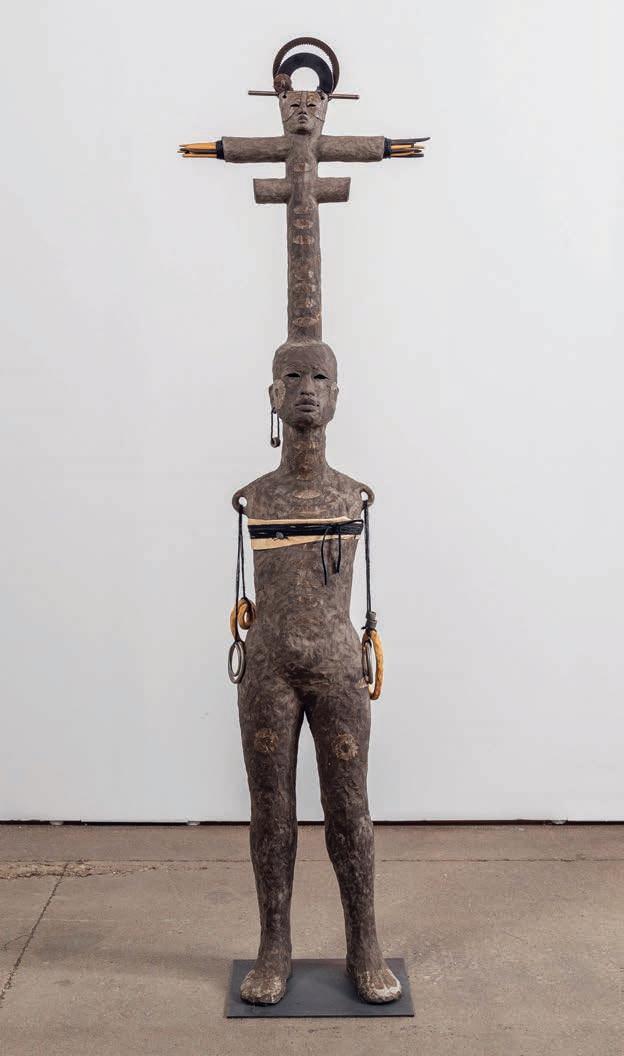
Unless otherwise indicated, all Preoccupied: Indigenizing the Museum exhibitions are co-curated by Dare Turner (Yurok Tribe), Curator of Indigenous Art at the Brooklyn Museum, and Leila Grothe, Associate Curator of Contemporary Art, with support from Curatorial Research Assistant Elise Boulanger (Citizen of the Osage Nation)
This project is generously supported by the Terra Foundation for American Art and The Andy Warhol Foundation for the Visual Arts
Additional support provided by The Eileen Harris Norton Foundation, the Robert Lehman Foundation, and ArtTable.
Upcoming exhibitions for Preoccupied: Indigenizing the Museum will be located in the Contemporary Wing.
Above: Rose B. Simpson (Santa Clara Pueblo), Heights II. 2022. Baltimore Museum of Art: Art Fund established with exchange funds from gifts of Dr. and Mrs. Edgar F. Berman, Equitable Bank, N.A., Geoffrey Gates, Sandra O. Moose, National Endowment for the Arts, Lawrence Rubin, Philip M. Stern, and Alan J. Zakon, BMA 2022.65. Courtesy of the artist and Jessica Silverman, San Francisco. © Rose B. Simpson. Photo by Timothy Johnson
Don’t wait for me, just tell me where you’re going
May 12, 2024–December 1, 2024
Filmmaker and visual artist Sky Hopinka (Ho-Chunk Nation and a descendant of the Pechanga Band of Luiseño people) curates a film program presented on a continuous loop in the BMA’s Black Box gallery. A founding member of COUSIN, a collective that supports Indigenous artists expanding the form of film, Hopinka has selected short, experimental films by five Native filmmakers, including We Only Answer Our Landline (2019) by Olivia Camfield (Muscogee Creek Nation) and Woodrow Hunt (Cherokee, Klamath, and Modoc Tribes descendent); all-around junior male (2012) and seeing her (2020) by Lindsay McIntyre (Inuk); (Blood Materials) (2021) by Fox Maxy (Mesa Grande Band of Mission Indians and Payómkawichum) and Civic Films; and Cerro Saturno (2022) by Miguel Hilari (Aymara/German).
Guest curated
Sky Hopinka (Ho-Chunk Nation and a descendant of the Pechanga Band of Luiseño people)
This exhibition is located in the Contemporary Wing in the Robert & Ryda H. Levi Gallery.
April 21, 2024–December 1, 2024
Dyani White Hawk (Sičáŋǧu Lakota) presents new and existing sculptural works from her Carry series. Each of the three Carry works, composed of a large copper bucket and ladle adorned with glass beads, bears an extravagantly long fringe whose draping emulates arboreal root structures.
The works are displayed alongside historic Lakota moccasins and tobacco bags that White Hawk selected from the BMA’s collection. Through these works, White Hawk underscores an interdependence between art and function—and by extension art and life—effectively calling into question art history’s tendency to devalue craft. These works operate as physical metaphors for carrying history, cosmology, generational teaching, and deep thought.
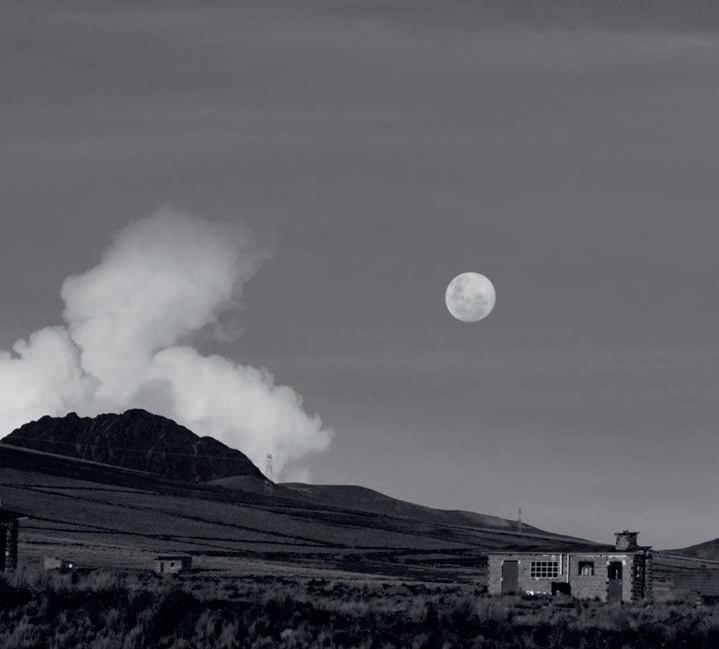 Left: Dyani White Hawk (Sičáŋǧu Lakota), Carry III 2020. Collection of the Kemper Museum of Contemporary Art, Kansas City, Missouri: Museum purchase made possible by a gift from the Kemper Family Foundations, 2021.04. © Dyani White Hawk, courtesy of the artist and Bockley Gallery.
Photo by E.G. Schempf
This exhibition is located in the John Waters Rotunda of the Jacobs Wing.
Left: Dyani White Hawk (Sičáŋǧu Lakota), Carry III 2020. Collection of the Kemper Museum of Contemporary Art, Kansas City, Missouri: Museum purchase made possible by a gift from the Kemper Family Foundations, 2021.04. © Dyani White Hawk, courtesy of the artist and Bockley Gallery.
Photo by E.G. Schempf
This exhibition is located in the John Waters Rotunda of the Jacobs Wing.
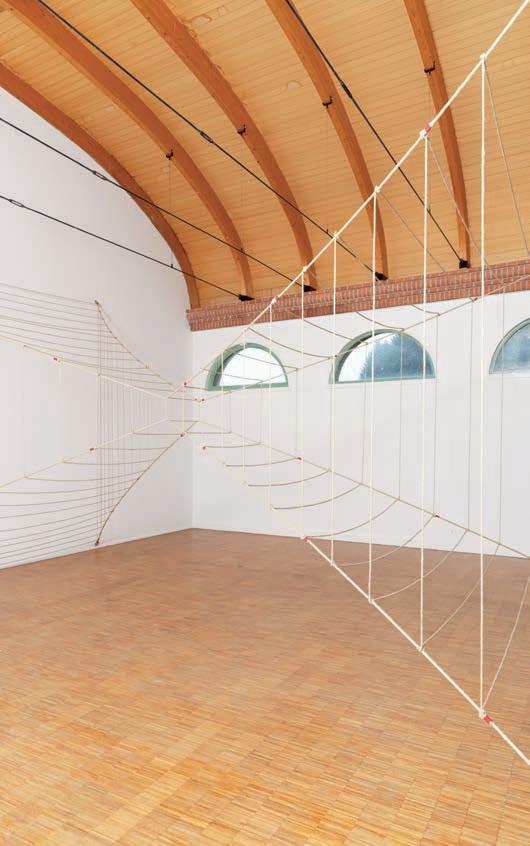
May 12, 2024–December 1, 2024
Caroline Monnet (Anishinaabe/French) interweaves inspiration from the forms and materials of eel pots made by Indigenous people of the Chesapeake Bay watershed along with traditional Anishinaabe residential dwellings, such as longhouses and wigwams. Incorporating 20th-century materials like plywood and polyethylene foam, Monnet’s work commandingly transforms and claims space while calling attention to Indigenous innovations and lifeways. In this way, Monnet affirms Indigenous people’s rightful place within the world of museums and the fabric of society at large while asserting the continued ingenuity of her people.
May 12, 2024–December 1, 2024
Transitions are often a fact of life for Indigenous people, whether by patterned migration, urbanization, or forced separation from family. This presentation encompasses the ways in which sanctuary has been and continues to be preserved. This gallery is anchored in Native artists’ dynamic relationship to land. As the pressures of colonization and contemporary life have interfered with traditional ways of being, Native people have maintained their culture and community connections with resilience and versatility. Finding Home explores the ways in which the ideas and experiences of sanctuary are preserved through historic objects and contemporary works by Duane Linklater (Omaskêko Ininiwak from Moose Cree First Nation) and Marie Watt (Seneca Nation of Indians and German-Scot ancestry), and others.
This exhibition is located in the Contemporary Wing in the T. Rowe Price Associates Foundation & James S. Riepe Family Gallery.
This exhibition is located in the Contemporary Wing in the Legg Mason Gallery.
Above: Caroline Monnet (Anishinaabe/French), Kibwàgawinigan. 2022. Courtesy the artist and Galerie Blouin Division. Photo © Aurélien Mole
Below: Marie Watt (Seneca Nation and German-Scot ancestry), Blanket Stories: Beacon, Marker, Ohi-Yo. 2015. Baltimore Museum of Art: Purchase with exchange funds from the Pearlstone Family Fund and partial gift of The Andy Warhol Foundation for the Visual Arts, Inc., BMA 2021.227 © Marie Watt
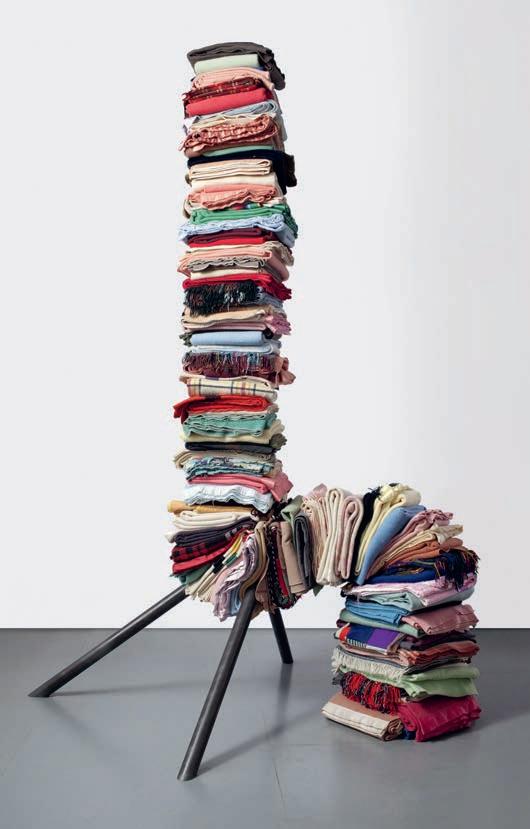

May 12, 2024–December 1, 2024
This exhibition reflects upon the systematic effort to exterminate the buffalo by the U.S. government in the 19th century, which leveraged an eradication effort to undermine vital Native lifeways and force Native Americans onto reservations. This effort fundamentally transformed Native artmaking historically and into the present moment. The critical importance of the buffalo within Plains Indigenous cultures can be felt across artworks that pre- and post-date the attempted extermination of the species.
May 12, 2024–December 1, 2024
This installation highlights the ways in which Native artists have increasingly asserted agency—the exertion of one’s own power—over representations of their communities and identities over time. In the early 20th century, white arts educators encouraged Native artists to create “authentic” art—as defined by settlers—that embraced traditional subject matter while often neglecting present realities. In the decades that followed, generations of artists have shrugged off settler expectations by depicting their community on their own terms. Such work illustrates the modern Native experience, problematizes harmful stereotypes, and pointedly challenges outsider understandings of Indigenous identity.
Among the featured artists are Julie Buffalohead (Ponca Tribe of Oklahoma), T.C. Cannon (Kiowa/ Caddo), Jaune Quick-to-See Smith (Citizen of the Confederated Salish and Kootenai Nation), Wendy Red Star (Apsáalooke (Crow)), and Rose B. Simpson (Santa Clara Pueblo).
This exhibition is located in the Contemporary Wing
This exhibition is located in the Contemporary Wing in the Ellen & Jack Wasserman Gallery.
Above: Unidentified Southern Cheyenne Artist, Saddle Bag Late 19th-early 20th century.
Brooklyn Museum: Museum Expedition 1911, Museum Collection Fund
Below: Wendy Red Star (Apsáalooke (Crow), Alaxchiiaahush / Many War Achievements / Plenty Coups 2014. From the series 1880 Crow Peace Delegation Baltimore Museum of Art: Purchase with exchange funds from the Pearlstone Family Fund and partial gift of The Andy Warhol Foundation for the Visual Arts, Inc., BMA 2020.28.10 © Wendy Red Star
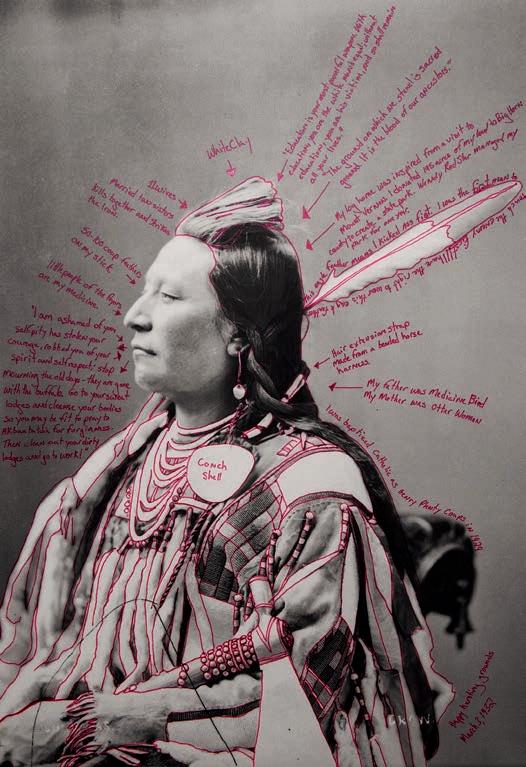
The First Lady of Maryland Dawn Moore, Chair of the Board of Trustees
James D. Thornton, and Dorothy Wagner Wallis Director Asma Naeem co-hosted the BMA Gala: A Night of Creativity & Discovery this past December, celebrating the grand reopening of the Patricia and Mark Joseph Education Center. The completion of the Joseph Education Center marks an exciting milestone in the BMA’s work to provide our community with new programs for families, students, and learners of all ages and backgrounds.
With newly commissioned engaging and immersive installations by renowned artists and educators Derrick Adams, Mary Flanagan, and Pablo Helguera, an interactive “Wall of Wonder” that encourages learning about artistic materials, and expanded spaces for programmed and individual artmaking, the Center offers a multi-sensorial learning experience and unforgettable sense of fun.
The evening included a first look at the Joseph Education Center and the unveiling of the commissioned installations, followed by a reception and dinner.
Thank you to our Table Sponsors:
The Sherman Family Foundation
The Whiting-Turner Contracting Company
Nancy Dorman* and Stanley Mazaroff
Patricia Lasher and Richard Jacobs
Thank you to our Host Committee:
Nancy L. Dorman*
Amy Elias
Darius Graham
Patricia Lasher

Brown Capital Management
George Petrocheilos and Dr. Diamantis Xylas
Robert E. Meyerhoff and Rheda Becker
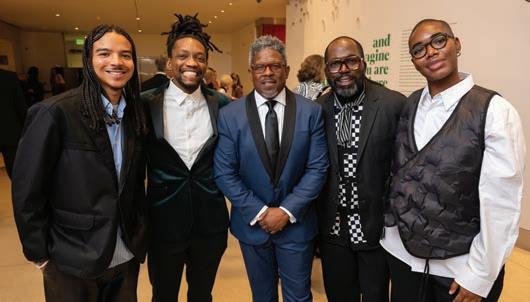
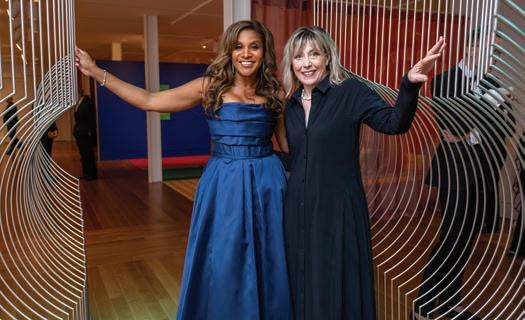

George Petrocheilos
Michael Sherman
James D. Thornton
Kwame Webb
Learn more about the BMA’s programs that foster learning, creativity, and lifelong curiosity at artbma.org/support.
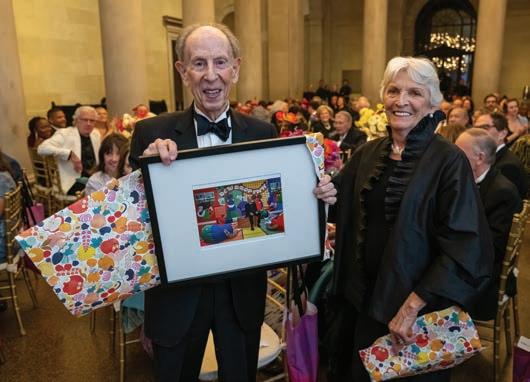
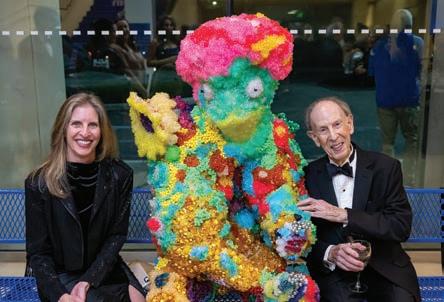
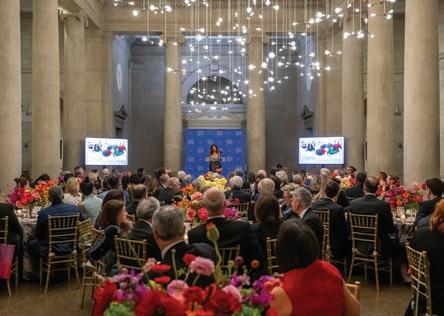
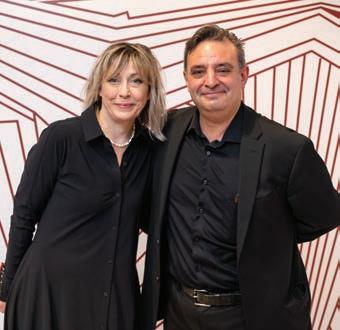
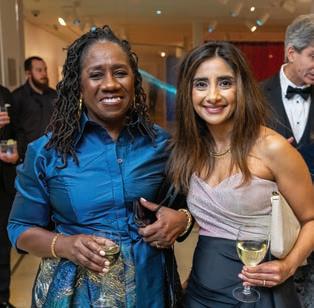

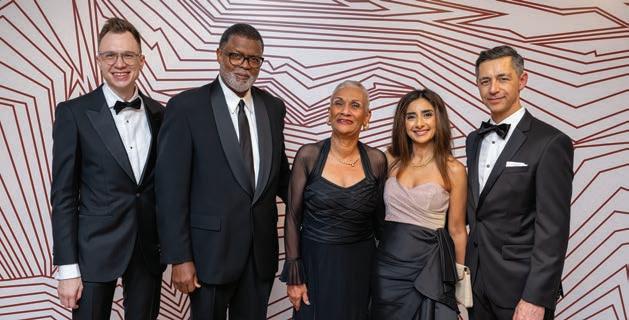
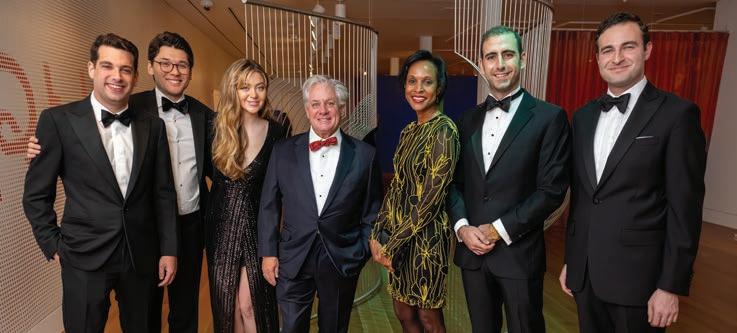

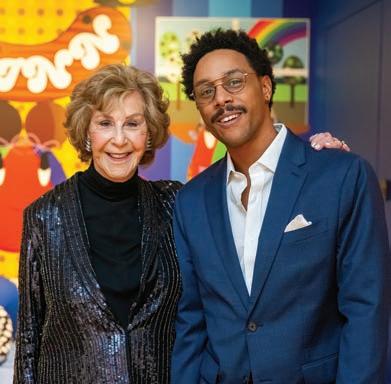
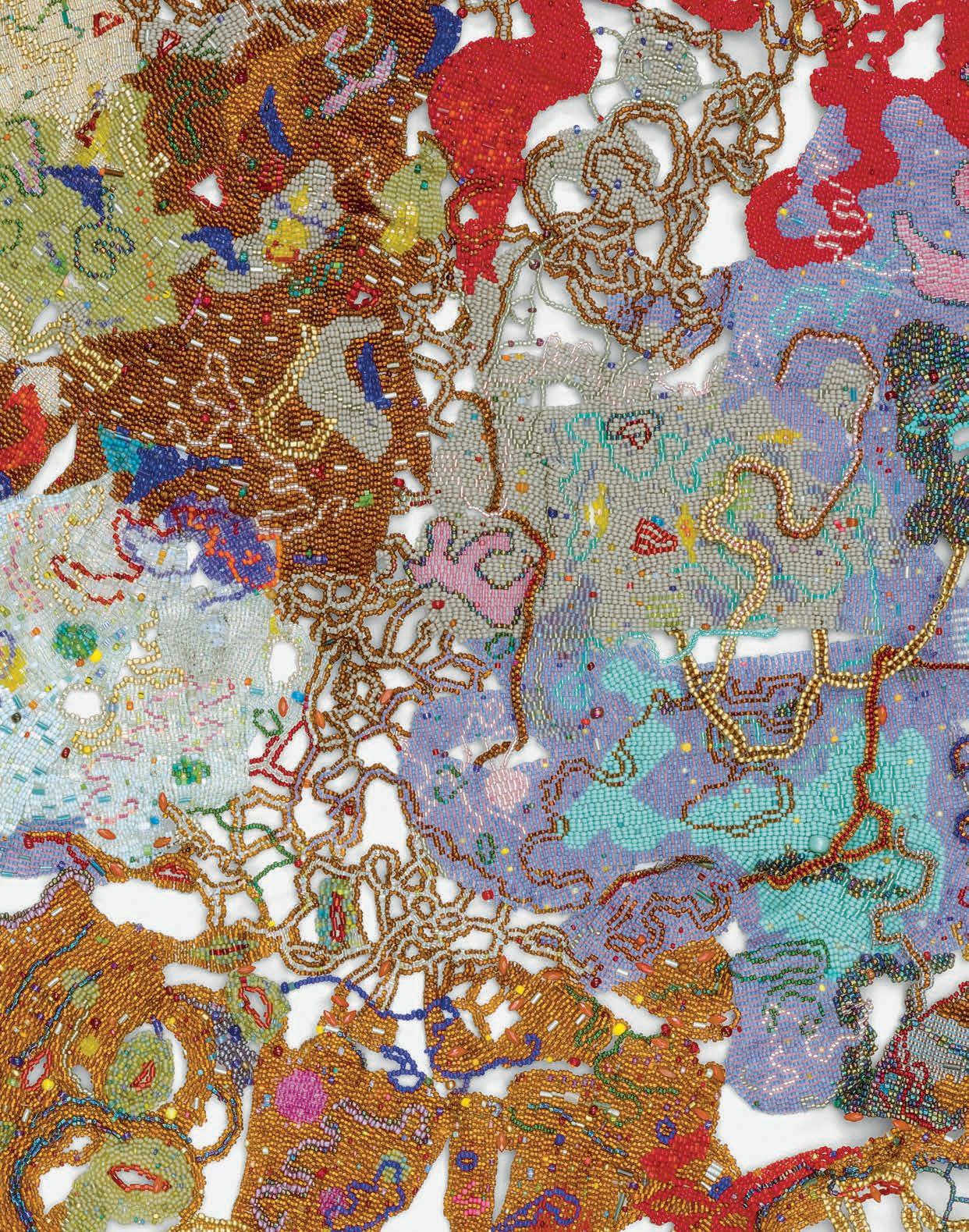
The 50-year career retrospective of one of the most significant artists of our time

Mentor and matriarch, consummate artist, avowed trickster, and always an inspiration: Joyce J. Scott has spent five decades creating dazzling, genre-defying art, fostering creative communities, collaborating across generations and disciplines, and confronting injustice with beauty, grace, and humor.
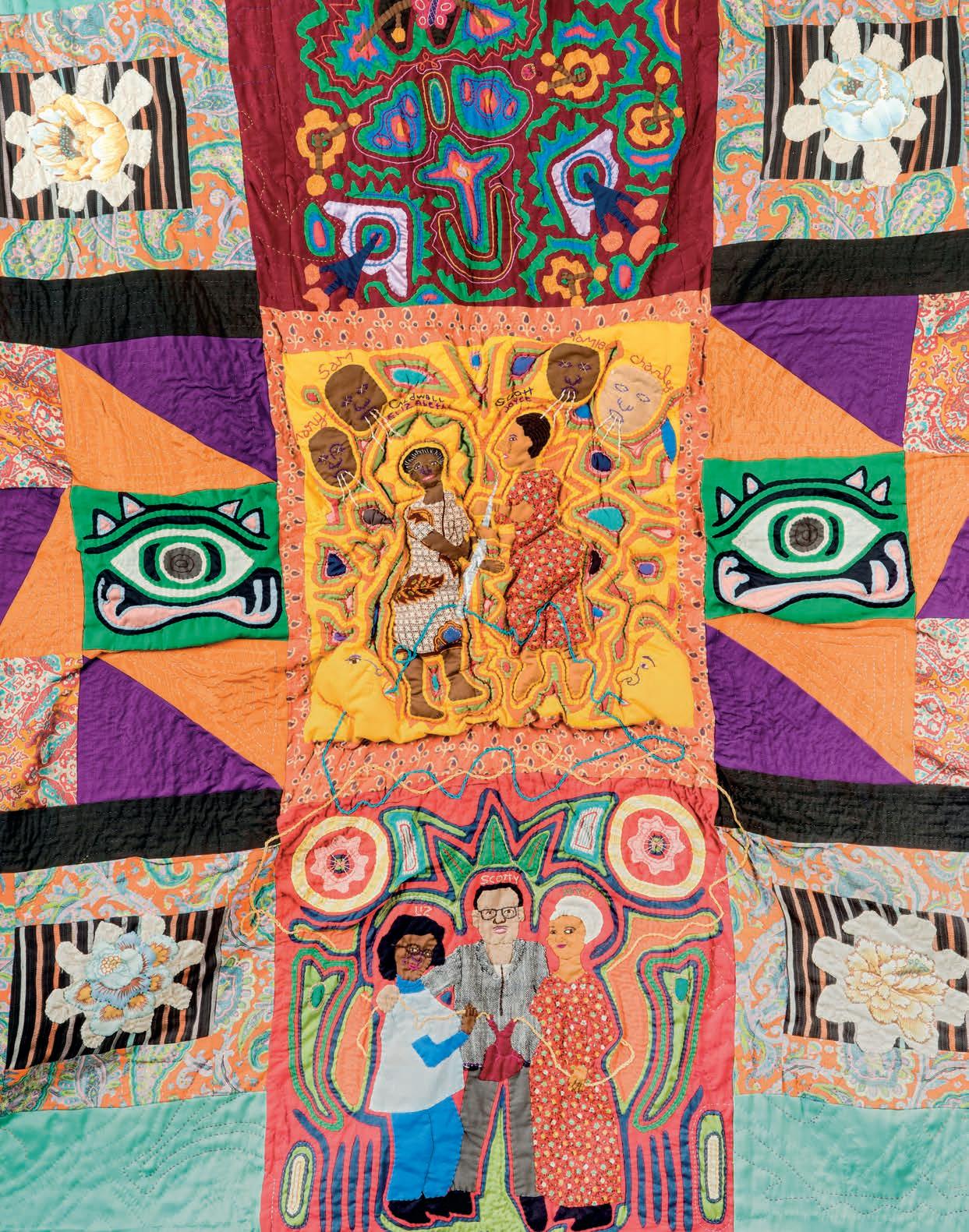
“I actually believe art is one of the engines causing the Earth to rotate.”
—Joyce J. Scott
The summative career retrospective Joyce J. Scott: Walk a Mile in My Dreams, co-organized with the Seattle Art Museum, features nearly 140 examples from the artist’s expansive career—including sculpture, garments and jewelry, performance footage, and ephemera from Scott’s personal archive, tracing the history of her practice through ten thematic sections.
In the first gallery, visitors will encounter a newly commissioned installation: The Threads That Unite My Seat to Knowledge. In this “habitat for the soul,” Scott shares familial histories in a storytelling environment of heirloom quilts. Working with collaborators Espi Frazier, Pamela Li, Randi Reiss-McCormack, and Teresa Sullivan, Scott adorned this structure with crochet and beadwork. On surrounding walls, story quilts and beaded tapestries create an imaginative landscape, while figurative sculptures “offer wisdom” at the four corners of the room.
“I luxuriate in beauty. I love just making beautiful things. I know that if my best voice as a citizen is in my work, then that’s what I should be doing.”
—Joyce J. Scott
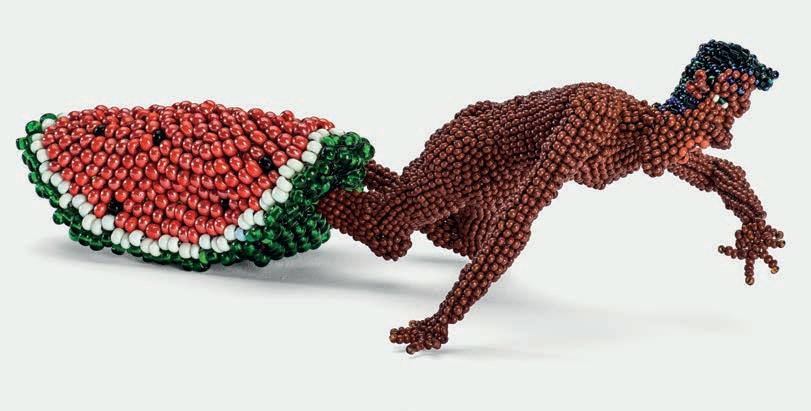
Born and raised in Baltimore, Scott earned her BFA at MICA. Her mother, the artist Elizabeth Talford Scott (whose artworks are also exhibited at the BMA and across Baltimore this spring), encouraged Scott’s identity as an artist from childhood. Scott learned to make the things necessary for daily life—clothing, quilts, and her home environment—into beautiful artworks by recycling, salvaging, and creating anew from discarded materials. She also learned a cooperative, egalitarian ethos which evolved and grew as she traveled the world. During her graduate studies at the Instituto Allende in Mexico, and subsequent travels through Central America, Africa, Europe, and Asia meeting artists who integrate their art into daily life, Scott recognized that her family’s creative power belongs to a global continuum.
In 1976, Scott learned the peyote stitch from Muscogee (Creek) artist Sandy Fife Wilson, forever transforming her artistic practice. Scott uses this versatile technique as the engine for her art by improvising flat and
dimensional beadwork patterns in any shape she can imagine. Scott speaks of her “passport of needle and thread” as a way to connect with people across cultures wherever she goes. She has nurtured deep roots in Baltimore, bringing the world back to her hometown and sharing Baltimore with the world.
“My parents gave me the ability to be a global citizen, and that’s what I was going to be.”
—Joyce J. Scott
Scott’s calls for social justice— an essential component of her artistry—challenge inequality and agitate for freedom. She uses beauty and humor in her works to ignite conversations and draw attention to global and local injustices. Creating a sense of intimacy and deep empathy in even her most confrontational and demanding art, Scott shows that a life of art is an act of resistance and persistence. The Museum
offers a conversation guide with prompts and questions to support close looking and processing tough subjects together with young visitors in your care.
Scott uses humor—especially satire—in many of her works as a means of talking about the hurtful consequences of racist stereotypes. In Man Eating Watermelon, 1986, she inverts this racist trope as the beaded sculpture depicts a carnivorous fruit, using this punchline to demonstrate the destructive impact of racist and reductive imagery. The dazzling beadwork and small scale of such works draw viewers in to look more closely and open their hearts to the difficult conversations they spark.
“I believe that art is therapeutic,” Scott explains. “It’s a healing situation.”
Scott’s use of humor extends to her performance pieces, where laughter is empowering and cathartic. In 1985 Scott and actor/director Kay Lawal-Muhammad created the Thunder Thigh Revue, their body positive performance Women of Substance embracing
Left: Joyce J. Scott, Three Generation Quilt I (Detail). 1983. Collection of the artist. © Joyce Scott, courtesy Goya Contemporary Gallery. Photo by Joseph Hyde Joyce J. Scott, Man Eating Watermelon 1986. Collection of Paul Daniel and Linda DePalma. © Joyce Scott, courtesy Goya Contemporary Gallery. Photo by Mitro HoodFeatured
the full complexity of Black womanhood. The duo toured the United States and internationally until 1990, with a revival show at Theatre Project in Baltimore in 2012.
Identifying as a community artist, Scott’s primary subject is equality shared by all people.
Scott remains deeply invested in collective, intergenerational exchange wherever she travels for workshops and residencies and especially in Baltimore, where she has collaborated with the full array of cultural institutions and organizations. Her belief that creation is a communal endeavor may be most apparent in Turning the Tables, the weaving space at the heart of the exhibition. Here, Scott invites hands-on participation: museumgoers may invoke their own creativity, sit at a loom, and try their hand at weaving. The resulting tapestries will support MICA’s Dr. Joyce J. Scott Scholarship Fund to support artists and designers of color from Baltimore City.
“Does my work deserve perusal because it cools your anger with humor or because it fans the flames?”
—Joyce J. Scott
Together, the diverse array of works on view in the retrospective reveal Scott’s indomitable spirit and communal ethos, weaving together communities of artists while honoring ancestral makers, and adorning of the future of art with her wit, wonder, and wisdom. Reserve your free Member tickets at artbma.org/scott.
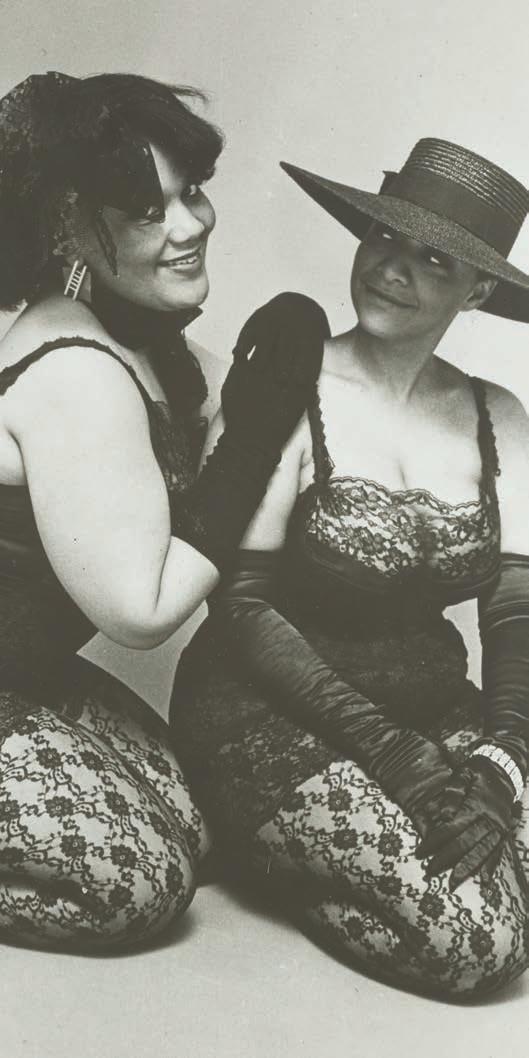

This exhibition is co-curated by Cecilia Wichmann, BMA Associate Curator of Contemporary Art, and Catharina Manchanda, SAM Jon and Mary Shirley Curator of Modern and Contemporary Art, with support from Leslie Rose, Joyce J. Scott Curatorial Research Assistant. On view in the Alvin and Fanny B. Thalheimer Galleries and The Saidie A. May Wing
Joyce J. Scott: Walk a Mile in My Dreams will be presented in Baltimore as a special ticketed exhibition from March 24, through July 14, 2024, and in Seattle from October 17, 2024, through January 20, 2025.
This exhibition and national tour are made possible by substantial grants from the Ford Foundation, Henry Luce Foundation, Terra Foundation for American Art, and The Andy Warhol Foundation for the Visual Arts.
The richly illustrated exhibition catalog Joyce J. Scott: Walk a Mile in My Dreams is available now at the BMA Shop.
In Baltimore, the exhibition is also supported by the Alvin and Fanny B. Thalheimer Exhibition Endowment Fund, The Dorman/Mazaroff Contemporary Endowment Fund, the Suzanne F. Cohen Exhibition Fund, Bank of America, Wagner Foundation, Joanne Gold and Andrew Stern, The Jacques and Natasha Gelman Foundation, Transamerica, the National Endowment for the Arts, the Clair Zamoiski Segal and Thomas H. Segal Contemporary Art Endowment Fund, Goya Contemporary Gallery and Martha Macks-Kahn, The Coby Foundation, Ltd., and the American Craft Council.
Left: Kay Lawal and Joyce Scott for the Thunder Thigh Revue’s Women in Substance performance, Baltimore, 1985. Philip Arnoult papers, Special Collections, Sheridan Libraries, Johns Hopkins University. © Joyce Scott, courtesy Goya Contemporary Gallery. Photo by Peggy Fox
The art of Elizabeth Talford Scott, Joyce J. Scott’s mother who was also an artist, is currently on exhibition in the Contemporary Wing on the 3rd floor until April 28, 2024. Eyewinkers, Tumbleturds, and Candlebugs: The Art of Elizabeth Talford Scott features 19 stunning textile works by the artist, which incorporate stones, buttons, shells, bones, sequins, beads, knotted material, glass, and other unconventional materials to create layered, organic shapes. The lush, embedded textiles interweave familial histories and personal experiences with symbols and motifs from the natural, mythical, and spiritual realms. This exhibition is a reexamination of the 1998 landmark exhibition of the same name that opened at MICA.
Elizabeth Talford Scott’s presence across Baltimore City is celebrated in the No Stone Left Unturned: The
Elizabeth Talford Scott Initiative, which brings together five museums and four universities for a reunion of Scott’s work from February through May 2024. Each venue is collaborating with a team of student curators currently enrolled in MICA’s Exhibition Development Seminar (EDS) from the participating colleges—Coppin State University, Johns Hopkins University, MICA, and Morgan State University— working on a presentation of Talford Scott’s work for their gallery spaces
and organizing a free public program. Under the guidance of 2023-24 EDS Instructor Deyane Moses, EDS students developed the curatorial direction of their presentation, drawing out connections to each organization’s collection, space, history, and audience.
For more information and events, please visit the Estate of Elizabeth Talford Scott at Goya Contemporary website: elizabethtalfordscott.com.
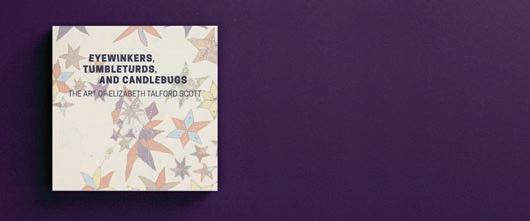
Guest-curated by MICA Curator-in-Residence
Emeritus George Ciscle and organized by BMA Associate Curator of Contemporary Art Cecilia Wichmann in dialogue with MICA Exhibition Development Seminar students.
Major support for the BMA exhibition and community partners provided by the Bunting Family Foundation.
Music commission supported by Doreen Bolger, Retired BMA Director, and Amy Raehse, Goya Contemporary Gallery, in honor of George Ciscle, an extraordinary curator and creator of MICA’s transformative Curatorial Practice program and Exhibition Development Seminar.
Community Day supported by Lorraine Whittlesey & Markell Whittlesey.
Printed and digital materials supported by the William G. Baker, Jr. Memorial Fund.
Accessibility resources supported by Robbye Apperson & Kevin Apperson.
The Closing Reception is supported by Carol and Jerry Doctrow.
In-kind support provided by the Estate of Elizabeth Talford Scott at Goya Contemporary. This exhibition is located on the 3rd floor in Edith Ferry Hooper Gallery, Nancy M. Haragan Gallery, and Vivian and Edward Benesh Gallery of the Contemporary Wing.
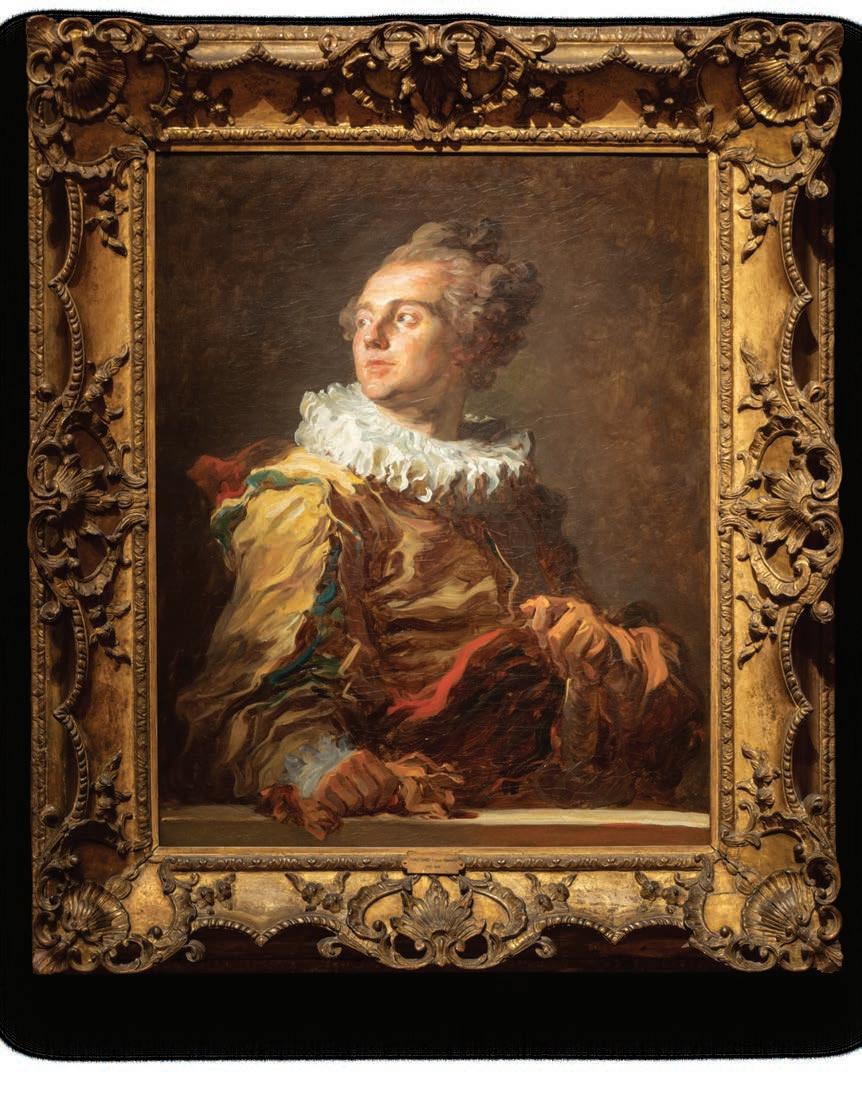
French
“Fragonard is bold and rebellious in these paintings,” Dr. Lara Yeager-Crasselt, Curator and Department Head of European Painting and Sculpture explains about the life and work of Jean-Honoré Fragonard (1732–1806), one of the most important and prolific
“Fragonard is bold and rebellious in these paintings.”
French painters of the late Rococo period (1730s–1760s).
Two of his nearly life-sized oil paintings—The Actor and Portrait of a Singer, both executed c. 1769—are currently on loan to the BMA from private collections and can be seen in the European Galleries. The works demonstrate Fragonard’s daring departure from the classical confines of the French Royal Academy and the prevailing traditions of Salon culture, both of which prioritized elevated historical subjects. After exhibiting for what would be the last time at the Salon of 1767, Fragonard turned to something quite different: portraying members of the French cultural elite, sumptuously dressed in what was known as the Spanish manner, often engaged in artistic or leisurely pursuits. Depicted in an animated and fluid style, these “fantasy figures” set him apart from his contemporaries.
In The Actor, a young man gazes dramatically over his right shoulder into the distance. He wears old-fashioned Spanish attire, including a large white ruff collar, and grasps a sword in his left hand. With the dramatic light animating his face, he seems to be in a moment of repose during a performance. But this is not a portrait of an actor, but rather Fragonard’s
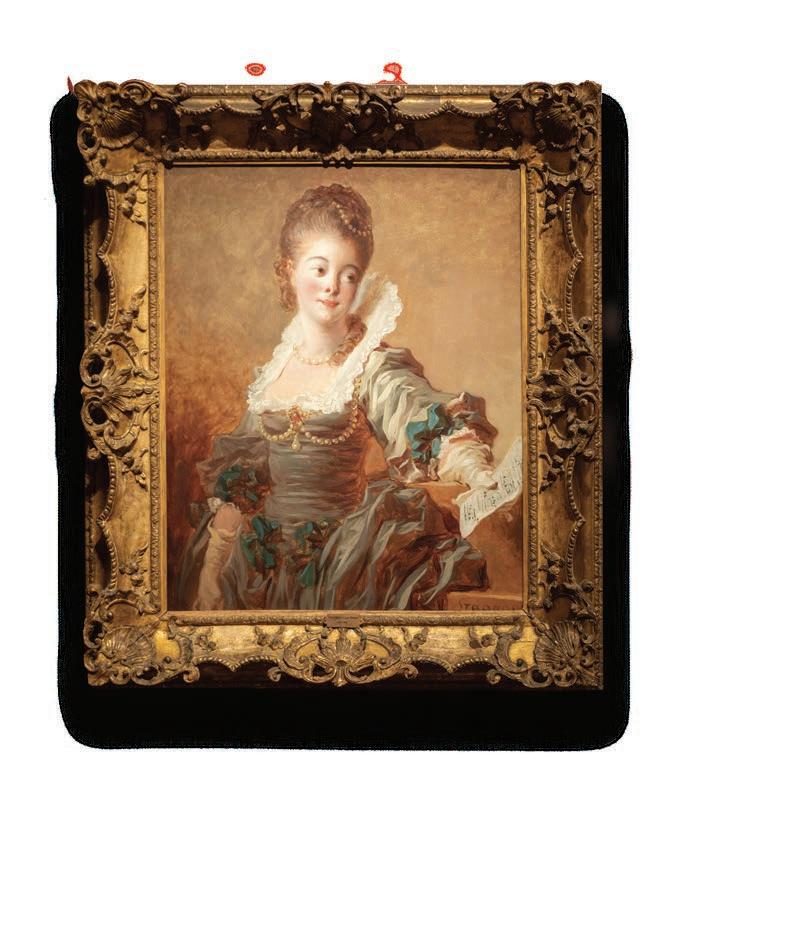
friend Gabriel Auguste Godefroy, the son of a wealthy Parisian banker. Likewise, the artist’s Portrait of a Singer depicts the music lover and harpsichord player Anne Pauline Le Breton in a costume à la espagnole (in the Spanish manner)—a satin gown with a square neckline and elbowlength sleeves, pearls, and a brooch—and highlights the singer’s expressive face and engaged posture as she holds out her sheet music.
The two paintings belong to Fragonard’s celebrated series of fantasy figures, all rapidly executed in an energetic and virtuosic manner. For many years, the sitters’ identities were unknown, but the discovery in 2012 of a drawing containing a set of 18 thumbnail-sized sketches directly related to the paintings significantly changed scholars’ understanding of the series. Each small sketch is annotated with the names of sitters or patrons from
1880s, and now belonging to their descendants, the paintings were among the many works seized in 1938 following the Anschluss, or annexation of Austria to Nazi Germany, and returned after the end of World War II. The last time they were publicly exhibited together was at the National Gallery of Art in 2017. Now, this pair of fantasy figures faces each other across the doorway in the BMA’s Jacob Epstein gallery, reunited and in conversation with each other once again.
The two Fragonard paintings join several 17th-century Dutch paintings also on long-term loan from private collections in the European Galleries of the Jacobs
A History of Women Artists in Europe, 1400-1800, by considering the role of women as patrons, artists, and participants in the arts and natural sciences. These “cabinet” paintings, small-scale works rendered in a fine manner and intended for close looking, were all created in the city of Leiden in the second half of the 17th century. In contrast to Fragonard’s broad and rapid brushstrokes, these works by artists Frans van Mieris, Willem van Mieris, and Maria Schalcken, are small marvels where viewers can barely see any brushstrokes at all, creating an illusion of realism.
Fragonard’s close circle of friends and associates. This vast social network was explored during a 2017 exhibition at the National Gallery of Art, Fragonard: The Fantasy Figures, in which the newly discovered sketch was shown alongside the 14 known fantasy figure portraits, The Actor and Portrait of a Singer among them.
“This was an unusual group of paintings, daring and irreverent both in its conception and execution,” Yeager-Crasselt continues. “There are blurred boundaries, or a kind of intentional ambiguity in the line between formal portraiture and fantasy. They have a grand presence and immediacy that is supported but also challenged by how quickly and confidently Fragonard executed them.”
The two paintings were paired together in a private collection in the late 19th and early 20th centuries. First acquired by the celebrated Rothschild banking family in the
Now, this pair of fantasy figures faces each other across the doorway in the BMA’s Jacob Epstein gallery, reunited and in conversation with each other once again.
Wing. Gabriel Metsu’s (16291667) delicately rendered Lady Before a Mirror, 1663–1666, shows a scene of upper-class domesticity and romance with the trappings of Dutch colonial wealth—a Turkish-styled rug and gilded items adorn the lady’s vanity. The painter Jan Baptist Weenix (1621–1659) depicts an Italianate landscape in his idealized scene of a bustling harbor juxtaposed with shepherds and their flock sitting among the ruins of classical Roman architecture.
Three additional paintings lent by The Leiden Collection, New York develop some of the themes inherent to the recent exhibition Making Her Mark:
“The Dutch paintings lent to us fill significant gaps in the stories that we’re able to tell in the galleries,” Yeager-Crasselt shares. “Dutch genre paintings are not represented in our permanent collection, and that is such a pivotal part of the artistic tradition that stretches from the 17th century onward, including Fragonard. And not to mention the thrill of having works of such superb artistic quality complement our own collections.”
Most importantly, she stresses that these loans allow visitors to experience the galleries anew and create fresh perspectives. “With the generosity of these loans, we can shed light on new stories and dialogues, enhancing our own collection in exciting ways. Together, these opportunities create new dynamics and opportunities for engagement with European art.
Nancy L. Dorman’s passing in January 2024 prompted many reflections from her colleagues on her dedication to the BMA’s mission, her thoughtful leadership as a Trustee, her warmth and wry humor, and her extraordinary generosity alongside her husband Stanley Mazaroff.
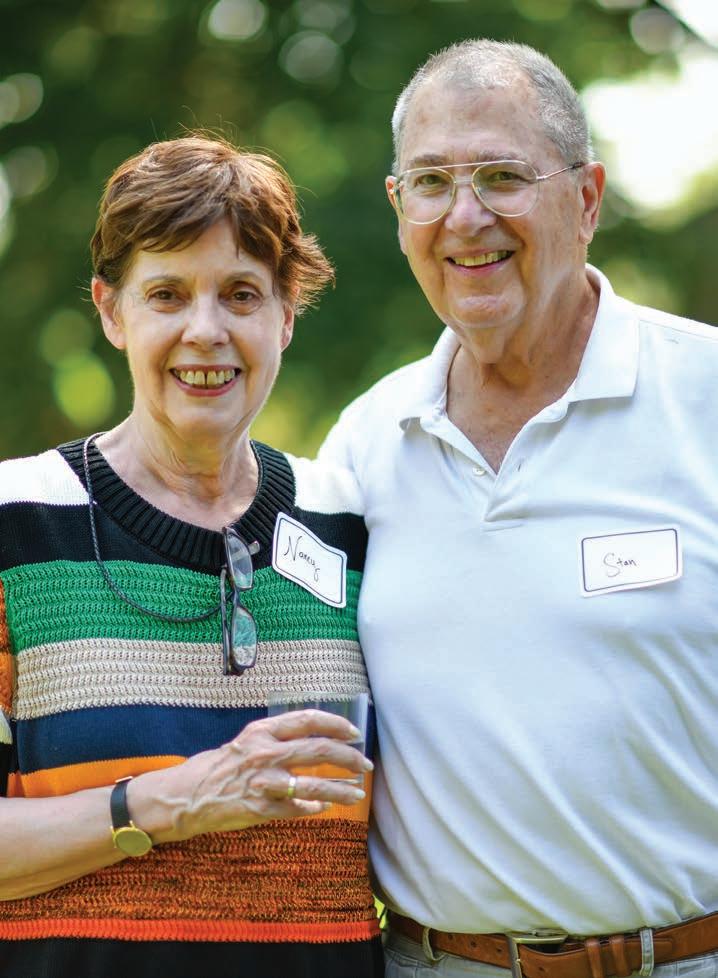
“I have so many fond memories of Nancy, and I considered her not only a colleague but also a friend. As a consummate Trustee, Nancy wholeheartedly embraced her responsibility and demonstrated through her actions a love for the BMA. This was manifested in many ways—her generous financial support and the wonderful works of art donated to the Museum.
Perhaps her most enduring quality was the fierce commitment she had for advocating for the welfare and well-being of the staff. She was unwavering in making sure that the voices of the BMA Staff were considered in Board decisions that would impact them.
During her leadership as Chair of the Governance Committee, the Board committed to becoming more diverse and Nancy was critical in this endeavor. Her commitment to the BMA’s Strategic Plan made her a champion among her colleagues. Her contributions to the BMA will live on for years to come and we will miss her quiet but effective presence.”
—James D. Thornton, Chair, Board of Trustees“ Her contributions to the BMA will live on for years to come and we will miss her quiet but effective presence.”
“Nancy’s love for art, her belief in art’s power to give language to our emotions, and her desire to share that appreciation were contagious. Each Trustee of the past 20 years likely met with Nancy for coffee or lunch, talked with her about an exhibition, the collection, the Board’s goals, and community engagement. Nancy could see the big picture and not miss the details. With her quiet persuasion, wry humor, and boundless generosity of time, thought, and encouragement, hers was the clear voice that we always wanted to hear. I asked if I could install a hotline red phone at her home as she guided me into the Chair of Governance. All of this is to say that Nancy’s friendship was a cherished gift that will be missed, and she will be remembered as an enduring, supportive friend of art and the BMA.”
—Patricia Lasher, BMA Trustee
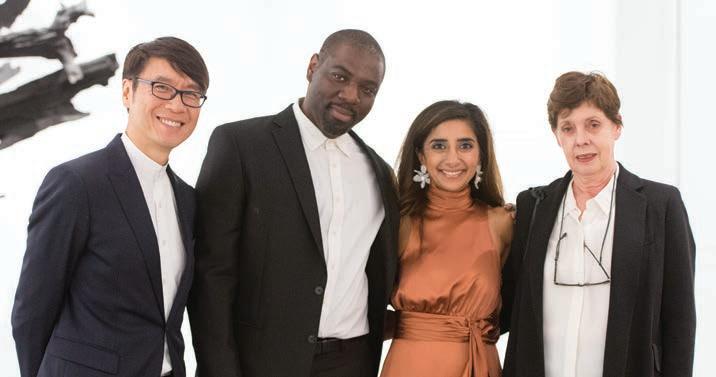
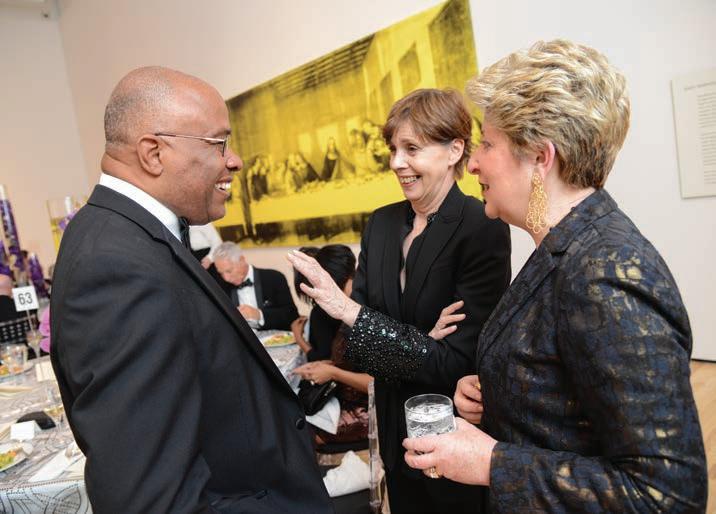
“In September 2007, The Contemporary took its first out-of-state field trip to Utah to see Robert Smithson’s Spiral Jetty (1970) and Nancy Holt’s Sun Tunnels (1976). There were eight people on the trip, including Nancy and Stan, Laura Freedlander, and me. The untested staff of The Contemporary had rented a van without shock absorbers or heat and, heading toward the Spiral Jetty, we were accompanied by a snowstorm most of the way. This photo of Nancy and Stan (left) shows their happiness as we found the Spiral Jetty displayed above a low-water level after hiding under the Great Salt Lake for many years. It was a magical moment and I’m glad to have captured them on this adventure.”
—Susan B. Katzenberg, BMA Trustee“She was a good friend and frequent advisor, fun to work with, and the last to take credit.”
“From a Trustee’s perspective, Nancy was the model. During her many years as a Trustee and Honorary Trustee, she worked tirelessly for the Museum. The real work of the Board takes place in committees, which meet often and require attention and action. From fundraising and capital planning to marketing, audience development, accessions, and investment, Nancy was thoughtful, energetic, and productive.
In 2021, Nancy and Stan made a promised gift of 90 works from their extensive collection of contemporary art, as well as a transformative gift to establish the Nancy Dorman and Stanley Mazaroff Center for the Study of Prints, Drawings and Photographs. They had previously created the Dorman/Mazaroff Contemporary Endowment Fund to provide for the continuing accession of art works. Her contributions will continue to have a notable impact on the study and display of art today and well into the future.
Nancy was selfless in her devotion to the well-being of Museum leadership and staff, the development of a collegial and effective Board of Trustees, and the continuing success of the Museum. She was a good friend and frequent advisor, fun to work with, and the last to take credit. We will miss her.”
—Virginia Adams, BMA Trustee
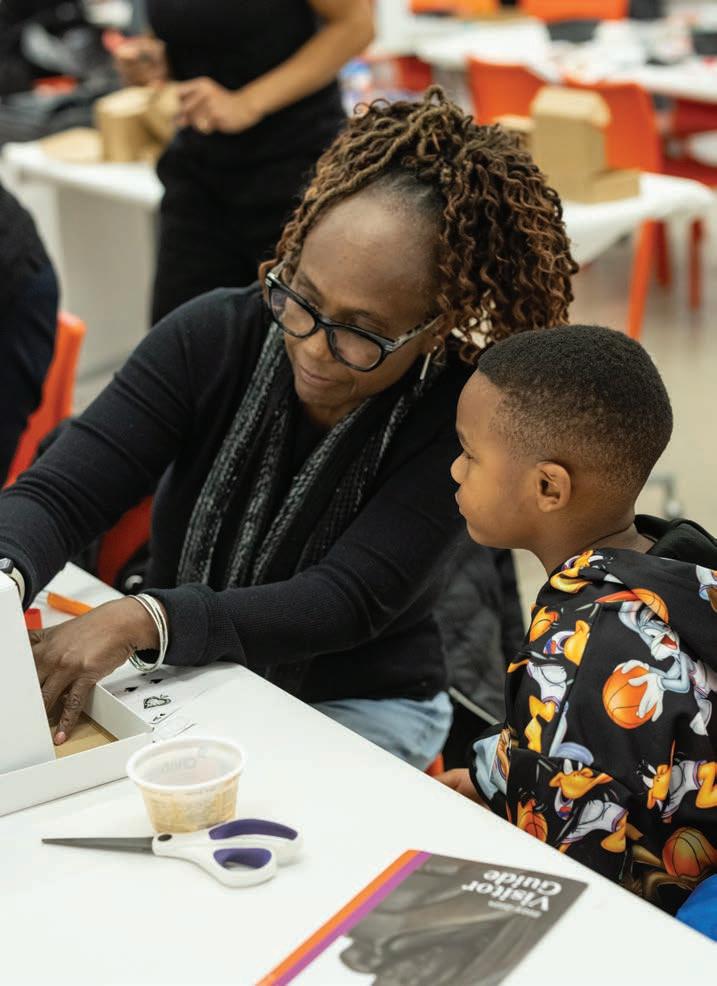
Every Sunday, 2–5 p.m.
Free Family Sundays are back. Embrace your inner artist, while exploring exhibitions and works from the collection through hands-on art-making workshops each and every Sunday in the Ellis A. Gimbel Children’s Studio. Designed for children and families, Free Family Sundays feature artist-led making sessions in a variety of mediums and focused on different themes.
Stay tuned to artbma.org and sign up for the BMA Families email list for upcoming program information.
Sunday, March 24, 1–5 p.m.
Celebrate the public opening of Joyce J. Scott: Walk a Mile in My Dreams. An event for the entire family inspired by Baltimore-based visionary artist Joyce J. Scott. Enjoy free access to the exhibition, hands-on artmaking, light bites, and activities for all ages.
This event is generously sponsored by Transamerica.

Saturday, April 13, 9 a.m.–12:30 p.m.
Join educators from across the state for a hands-on workshop exploring Joyce Scott: Walk a Mile in My Dreams. Designed exclusively for teachers, this workshop begins with a light breakfast and includes a private curatorial tour of Joyce Scott: Walk a Mile in My Dreams, artmaking led by a teaching artist, and discussion connecting art to the classroom curriculum.
Participants will also receive a BMA tote bag and 10% off at the BMA Shop.
Thursday, April 18, 6–8:30 p.m.
Join us for an evening of Black dance, music, and history presented by the Johns Hopkins University’s Billie Holiday Center for Liberation Arts. Each year, the Billie Holiday Center invites distinguished intellectuals and arts practitioners to address topical, historical, or philosophical issues connecting the work of the arts to the renewal and revitalization of civic life. This lecture series is the Billie Holiday Project’s capstone annual public lecture and honors the life of one of Baltimore’s promising young leaders who lost his life to violence.

Thursday, May 9, 6–8:45 p.m.
Experience a presentation, printmaking demonstration and a hands-on workshop inspired by the Art/Work: Women Printmakers of the WPA exhibition.
Featuring almost 50 works on paper, this exhibition reexamines the social, political, cultural, and artistic contributions of women printmakers employed for the Works Progress Administration’s Federal Arts Project in the 1930s and 1940s.
On view Wednesday, May 15 through Sunday, May 19
For the 36th time, the BMA is hosting the annual countywide student exhibition, Art is for Everyone, presenting artwork by Baltimore County public school students from Pre-K through 12th grade. The breadth of county schools’ art program is highlighted by a variety of two- and three-dimensional artworks, including sculpture, photography, drawing, painting, and digital art.
On view Wednesday, May 22 through Sunday, May 26
The BMA is proud to once again host fyi...For Your Inspiration, a city-wide student exhibition presenting artwork by students from pre-K through 12th grade from Baltimore City public schools. Now in its 17th year, experience the creativity and imagination of Baltimore youth in a range of artworks using traditional and surprising materials and techniques.
Friday, June 14, 8–11 p.m.
Members: $25
Non-members: $30
Experience a night at the museum. Baltimore’s best late-night art party is back celebrating the work of Joyce J. Scott, one of the most significant artists of our time. Art After Hours also features late-night access to the galleries, free admission to Joyce J. Scott: Walk a Mile in My Dreams, and one free food or cocktail item with the price of admission. Enjoy a variety of activities and entertainment, specialty cocktails and appetizers, artmaking, and music.
Stay tuned to artbma.org for more details and ticketing information.

Thursday, Friday, and Saturday from 10 a.m.–5 p.m.
Join us at the BMA’s branch location inside America’s oldest market and enjoy free art experiences Thursday, Friday, and Saturday from 10 a.m.–5 p.m.
Connecting Baltimore’s creative community with Lexington Market’s patrons, visitors are invited to make art, participate in public programming, read from our non-circulatory library, or simply just be.
Stay updated on upcoming programming like film screenings, musical performances, artist talks, and much more by visiting artbma.org/bmalexingtonmarket.
All programs and events are free and open to the public unless otherwise noted.
Left: Photo by Erika Nizborski; Center, left: Photo by Joseph Hyde, courtesy Goya Contemporary Gallery; Above, center: Installation view of A Celebration of Art/Work: Women Printmakers of the WPA. Photo by Mitro Hood. Above, right: Photo by Colby Ware
Members events.
Friday, March 22 and Saturday, March 23, 10 a.m.–5 p.m.
Members are invited to be the first to experience this compelling exhibition. Reserve your tickets ahead of time at artbma.org or stop by the welcome desk when you visit.
Saturday, March 23, 5:30–7:30 p.m.
Council Members are invited to an introductory exhibition talk in the Auditorium with co-curator Cecilia Wichmann, BMA Associate Curator of Contemporary Art. After the lecture, guests will have first access to the extraordinary retrospective as well as enjoy a reception in Fox and Antioch Courts.
Saturday, March 23, 7:30–9:30 p.m.
Members at all levels are invited to preview the retrospective and enjoy music, light fare, and a cash bar.
Reservations required; invitations will be emailed. To update your email on file, please contact membership@artbma.org or call 443-573-1800.
Left: Joyce J. Scott, Aloft (Detail). 2016-17. Collection of Ronald and Cynthia Thompson, © Joyce Scott, courtesy Goya Contemporary. Photo by Mitro Hood
Thursday, April 4, 4–6 p.m.
Katy Rothkopf, The Anne and Ben Cone Memorial Director of the Ruth R. Marder Center for Matisse Studies and Senior Curator of European Painting and Sculpture at the BMA, and Thomas Primeau, The Charles K. Williams, II, Senior Conservator of Works of Art on Paper at the Philadelphia Museum of Art, will offer BMA Council Members an in-depth discussion of the focus exhibition, Etched in Memory: Matisse’s Early Portraits. Following the tour, guests will enjoy a light reception on Gertrude’s terrace.
Reservations required; invitations will be mailed.
Friday, May 3—Sunday, May 5
Stop by the BMA Shop and enjoy a 20% discount.
No RSVP necessary.
Saturday, May 11, 8–11 a.m.
Join Leila Grothe, Associate Curator of Contemporary Art, for a light brunch and closer examination of the Preoccupied: Indigenizing the Museum initiative.
Open to Contributor-level Members and above. Invitations will be emailed. RSVP required.

Wednesday, May 22, 5:30–7:30 p.m.
Open to Members at all levels. Enjoy evening access to the exhibition Joyce J. Scott: Walk a Mile in My Dreams, 20% off at the BMA Shop, and light refreshments in the Segal East Lobby.
Reservations recommended; invitations will be emailed.
Sunday, June 2, 1–4 p.m.
Members at all levels with their families and friends are invited to spend an afternoon in the Sculpture Gardens. Enjoy music, all-ages crafts, and, of course, ice cream by local favorite, Taharka Brothers!
Reservations recommended; invitations will be emailed.
Members at all levels took part in a special evening celebrating the opening of Making Her Mark: A History of Women Artists in Europe, 1400-1800. Guests enjoyed previewing the exhibition, live entertainment, and mingling with each other.


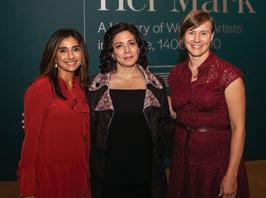




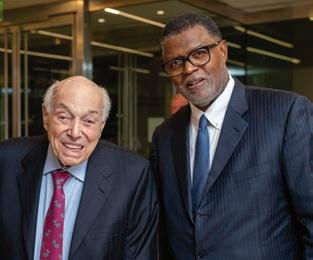

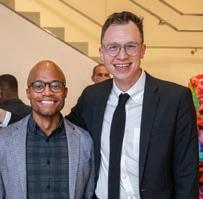
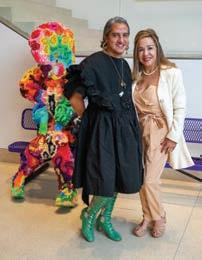
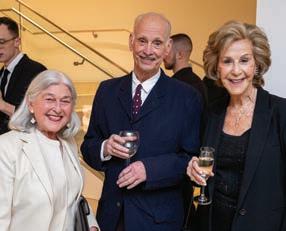
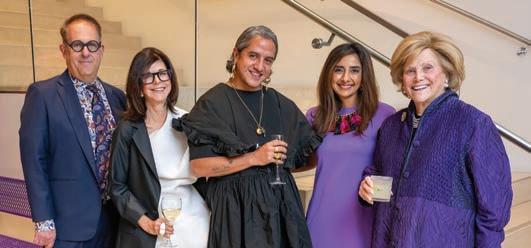
November 15, 2023
As the opening event of the two-year long Robert E. Meyerhoff and Rheda Becker Biennial Commission, Raúl de Nieves: and imagine you are here, BMA leadership, Board Members, artist Raúl de Nieves, and more joined in the celebration of de Nieves’ vibrant transformation of the Clair Zamoiski Segal and Thomas H. Segal East Lobby with a special artist dinner and reception.
Photos by Erika NizborskiFamilies and art lovers of all ages engaged in a variety of art-making games, activities, and events at the opening celebration of the Patricia and Mark Joseph Education Center. The newly renovated Joseph Education Center features hands-on installations, interactive learning experiences, and the studio where Free Family Sundays and other programs take place.
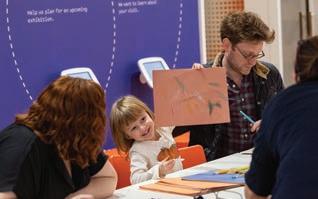
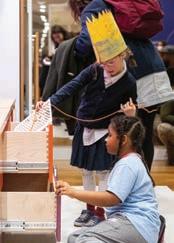

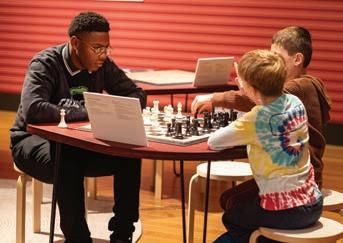



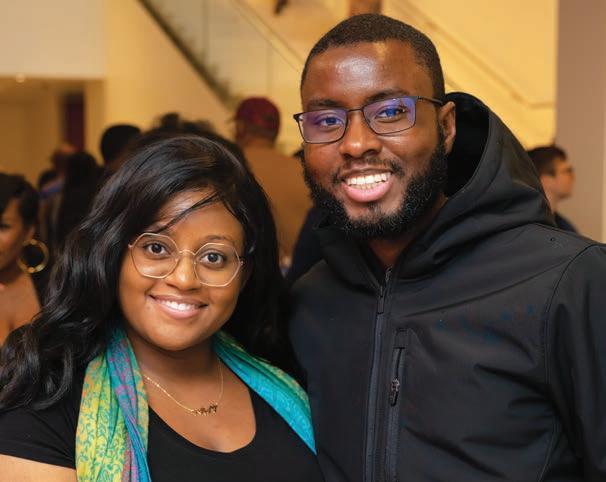
Free admission to ticketed exhibitions
Discounts on guest admission to ticketed exhibitions
Invitations to Member openings and events
Access to digital programming
10% savings at the BMA Shop and Gertrude’s Chesapeake Kitchen
Twice-yearly shopping days with 20% discount!
Subscription to the BMA Today, the magazine for Members, and monthly newsletter delivered to your inbox
Opportunity to travel on Member Day Trips
Discounts on parking during Museum hours
Member prices on programs and performances, Members save on Art After Hours tickets!
Photos by Erika Nizborski
Lauded by Food & Wine, Travel & Leisure, The Washington Post, Edible DC, The Baltimore Sun, and a multi-year winner of Baltimore magazine’s “Best of Baltimore,” Gertrude’s serves locally sourced farm-fresh food that preserves Chesapeake culinary traditions.
BMA MEMBERS
SAVE 10%
Please
Monday and Tuesday
Closed
Wednesday–Friday 11:30 a.m.–8 p.m.
Saturday
Brunch: 11:30 a.m–3 p.m.
Dinner: 5–8 p.m.
Sunday Brunch: 10 a.m.–3 p.m.
Dinner: 5–7 p.m.
gertrudesbaltimore.com or 410-889-3399
It’s never to early to make reservations for a special day or celebration, and you will certainly want a reservation for a table at Gertrude’s on Easter (March 31), Mother’s Day (May 12), or Father’s Day (June 16). Gertrude’s is open for brunch and dinner on those holidays offering fare from the regular menu as well as seasonal specialties. Reservations often fill up for these dates weeks in advance.
Whether you’re planning a corporate party, a celebration with family and friends, or a wedding, Gertrude’s makes a memorable event. No matter the size of your group, we will cover all the details to make it perfect. Call 410-889-3399 for more information.
Proceeds from the BMA Shop benefit the Museum’s educational programs.
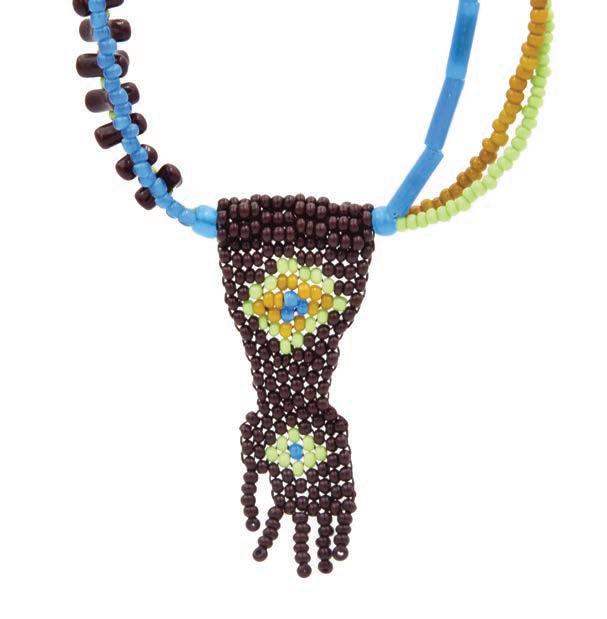
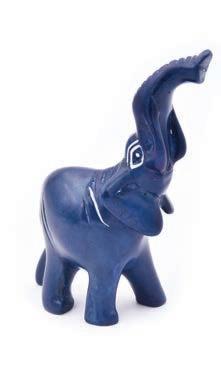
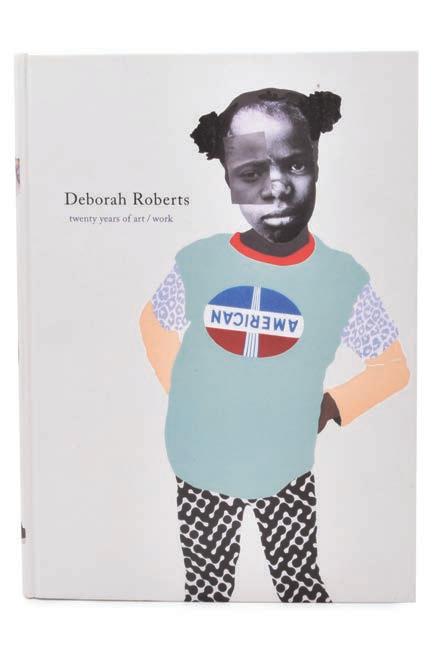

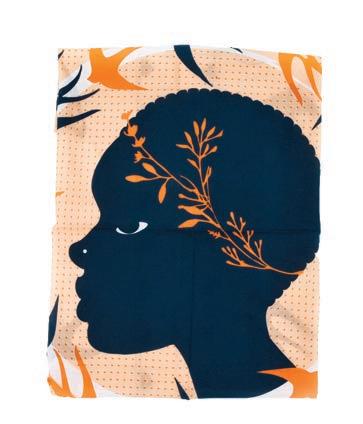
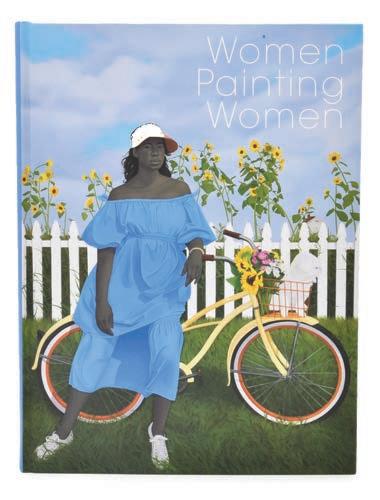

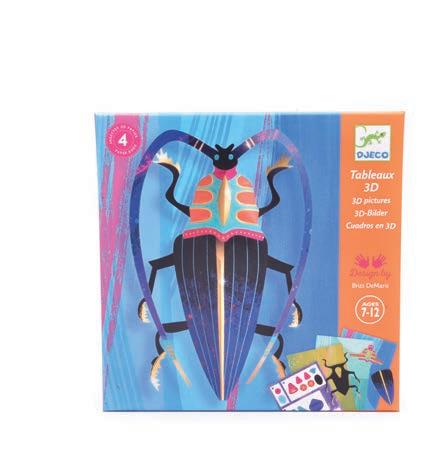
Histories Collide: Jackie Milad x Fred Wilson x Nekisha Durrett
Through March 17, 2024
Martha Jackson Jarvis: What the Trees Through March 24, 2024
Etched in Memory:
Matisse’s Early Portraits Through April 21, 2024
Eyewinkers, Tumbleturds, and Candlebugs: The Art of Elizabeth Talford Scott Through April 28, 2024
Tiona Nekkia McClodden: Play Me Home Through May 12, 2024
Art/Work: Women Printmakers of the WPA Through June 30, 2024
Raúl de Nieves: and imagine you are here Through May 4, 2025

Eyewinkers, Tumbleturds, and Candlebugs: The Art of Elizabeth Talford Scott Through April 28, 2024
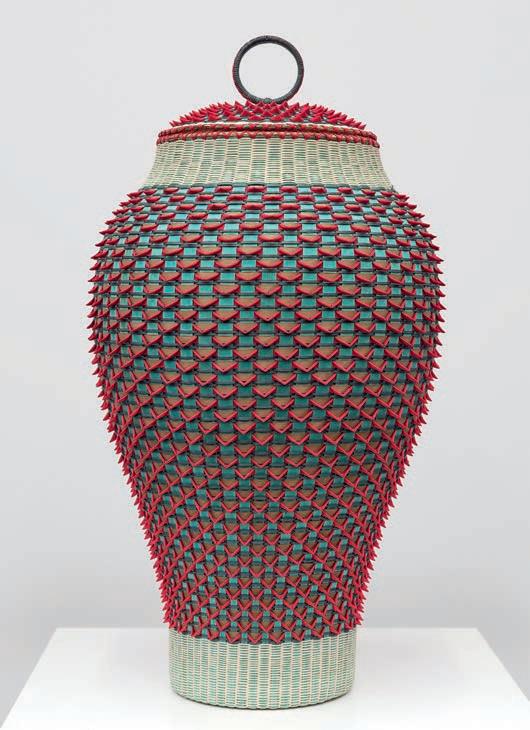
Finding Home
May 12, 2024–December 1, 2024
Joyce J. Scott: Walk a Mile in My Dreams
March 24, 2024–July 14, 2024
Dyani White Hawk: Bodies of Water
April 21, 2024–December 1, 2024
Don’t wait for me, just tell me where you’re going, guest curated by Sky Hopinka (Ho-Chunk Nation and a descendant of the Pechanga Band of Luiseño people)
May 12, 2024–December 1, 2024
Caroline Monnet: River Flows Through Bent Trees
May 12, 2024–December 1, 2024
Finding Home
May 12, 2024–December 1, 2024
Enduring Buffalo
May 12, 2024–December 1, 2024
Illustrating Agency
May 12, 2024–December 1, 2024
Baltimore County Public Schools Student Exhibition
May 15, 2024–May 19, 2024
Baltimore City Public Schools Student Exhibition
May 22, 2024–May 26, 2024
The Art of Pattern: Henri Matisse and Japanese Woodcut Artists
May 19, 2024–January 5, 2025
Above: Photo by Maximilian Franz; Left: Jeremy Frey, Aura. 2023. Baltimore Museum of Art: Charlotte B. Filbert Bequest Fund, BMA 2023.239. © Jeremy Frey. Courtesy the artist and Karma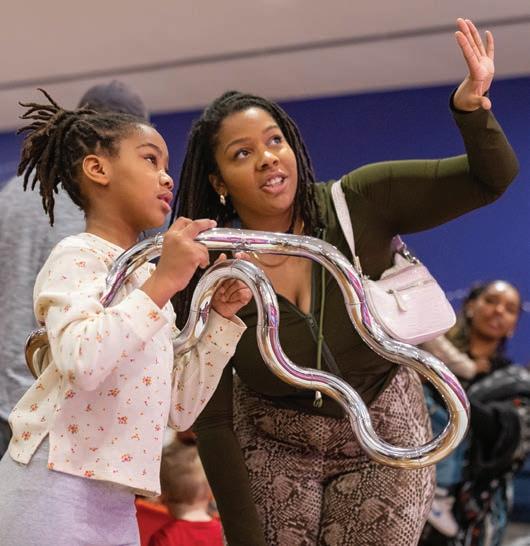
17 SUNDAY
Free Family Sunday, 2–5 p.m.
22 FRIDAY–23 SATURDAY
Joyce J. Scott: Walk a Mile in My Dreams Members Preview, 10 a.m.–5 p.m.
23 SATURDAY
Joyce J. Scott: Walk a Mile in My Dreams Council Talk & Reception, 5:30–7:30 p.m.
Joyce J. Scott: Walk a Mile in My Dreams Members Preview Party, 7:30–9:30 p.m.
24 SUNDAY
Community Day: Joyce J. Scott: Walk a Mile in My Dreams, 1–5 p.m.
Free Family Sunday, 1–5 p.m.
31 SUNDAY
Free Family Sunday, 2–5 p.m.
4 THURSDAY
Council Tour & Reception: Etched in Memory: Matisse’s Early Portraits, 4–6 p.m.
7 SUNDAY
Free Family Sunday, 2–5 p.m.
13 SATURDAY
Teacher Workshop:Joyce J. Scott: Walk a Mile in My Dreams, 9 a.m.–12:30 p.m.
14 SUNDAY
Free Family Sunday, 2–5 p.m.
18 THURSDAY
Donald V. Bentley Annual Memorial Lecture, 6–8:30 p.m.
21 SUNDAY
Free Family Sunday, 2–5 p.m.
25 THURSDAY
Faculty and Art Teacher Night: Joyce J. Scott, 4–8 p.m.
26 FRIDAY
Art After Hours, 8– 11 p.m.
28 SUNDAY
Free Family Sunday, 2–5 p.m.
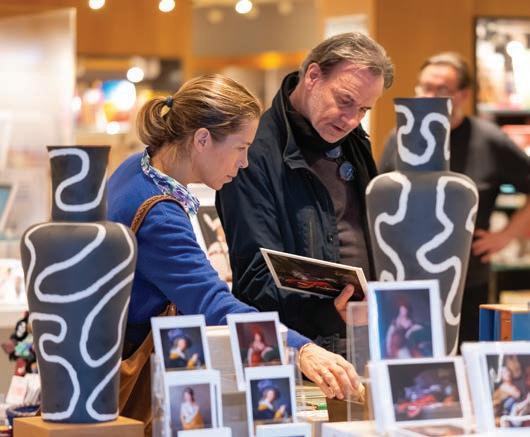
3 FRIDAY–5 SUNDAY Members
Spring Shopping Days
5 SUNDAY
Free Family Sunday, 2–5 p.m.
9 THURSDAY
A Celebration of Art/Work: Women Printmakers of the WPA, 6–8:45 p.m.
11 SATURDAY
Contributors Brunch: Preoccupied: Indigenizing the Museum, 8–11 a.m.
12 SUNDAY
Free Family Sunday, 2–5 p.m.
15 WEDNESDAY–19 SUNDAY
Baltimore County Public Schools Student Exhibition
19 SUNDAY
Free Family Sunday, 2–5 p.m.
22 WEDNESDAY
Members Shopping Evening, 5:30–7:30 p.m.
22 WEDNESDAY–26 SUNDAY
Baltimore City Public Schools Student Exhibition
26 SUNDAY
Free Family Sunday, 2–5 p.m.
2 SUNDAY
Members Ice Cream Social, 1–4 p.m.
Free Family Sunday, 2–5 p.m.
9 SUNDAY
Free Family Sunday, 2–5 p.m.
14 FRIDAY
Art After Hours, 8– 11 p.m.

16 SUNDAY
Free Family Sunday, 2–5 p.m.
23 SUNDAY
Free Family Sunday, 2–5 p.m.
30 SUNDAY
Free Family Sunday, 2–5 p.m.

In December 2023, Kevin Tervala was appointed the BMA’s Eddie C. and C. Sylvia Brown Chief Curator after serving as Interim Chief Curator for ten months and leading the Arts of Africa, the Americas, Asia, and the Pacific Islands (AAAPI) Department since 2015. At the BMA, he has played a major leadership role: developing plans for the Museum’s collections and diversifying the voices represented within the galleries, working with college and university partners, and prompting action plans for ethical collections care. He reconceptualized the African collection creating conversations between contemporary and ancient works and developed the first gallery dedicated to Oceanic art at the Museum; both major initiatives took place in December 2021, in advance of the 100th anniversary of the BMA’s first acquisition of a non-Western artwork.
What does it mean to you, personally, to take on the role of Chief Curator?
It means a lot to serve the city where I was raised. This is such a creative city. There are so many artists here and so many institutions devoted to the arts. When I tell other people about Baltimore, I say that we punch so much above our weight when it comes to the cultural offerings. It’s also an exciting time at the Museum. We are one of the best museums in the country. I love our collection and vision. Where Asma [Naeem, Dorothy Wagner Wallis Director] wants to take the Museum is exactly where we need to go. Her vision of connecting the global and the local speaks to me very deeply. Additionally, we are focusing even more on educational opportunities and initiatives—university partnerships, community advisory panels, the reopening of the Patricia and Mark Joseph Education Center, and expanding family and young learner programming. We have a great future ahead of us.
How does your background as a specialist in African art inform your new role?
Historically, curators of the so-called “non-Western world” have been given small gallery spaces, and very few have moved into leadership positions. The structures and processes of most museums are still very much based in a Euro-American context. In an exhibition like Making Her Mark: A History of Women Artists in Europe, 1400-1800, it’s considered revolutionary to integrate painting, sculpture, decorative arts, and textiles. But in AAAPI
galleries within museums, we have been having those conversations across media, countries, and time periods for decades. I’m excited to dive into what it means to be a global art museum located in a global city, making sure that the art history we tell in our galleries is representative of the world. Over 83% of the world is neither the United States nor Europe, and museums should reflect that: art history is the story of all humanity. The Matter of Bark Cloth exhibition is a great example of that. Bark cloth is a material that is created everywhere in the world, uniting us through this material.
What are some of the major initiatives you are working on?
We need to make sure that everyone can see themselves in this museum. By considering more global artworks and artists, we can broaden our reach across the world. Global trade and exchange, and the circulation of ideas and materials have been happening since the beginning of time. Those art historical narratives need to be shared and we are developing ways to tell these histories. I’ve also been focused on issues of ethical collection management, repatriation, restitution, and how we create trust in our collections. When visitors come into the BMA, they should be able to know how a work came into the collection. How do we communicate our collecting values to visitors? And how do we transform the way that we care for objects in a way that’s more transparent than museums have been comfortable doing before? Those are big questions that we’re working on answering.
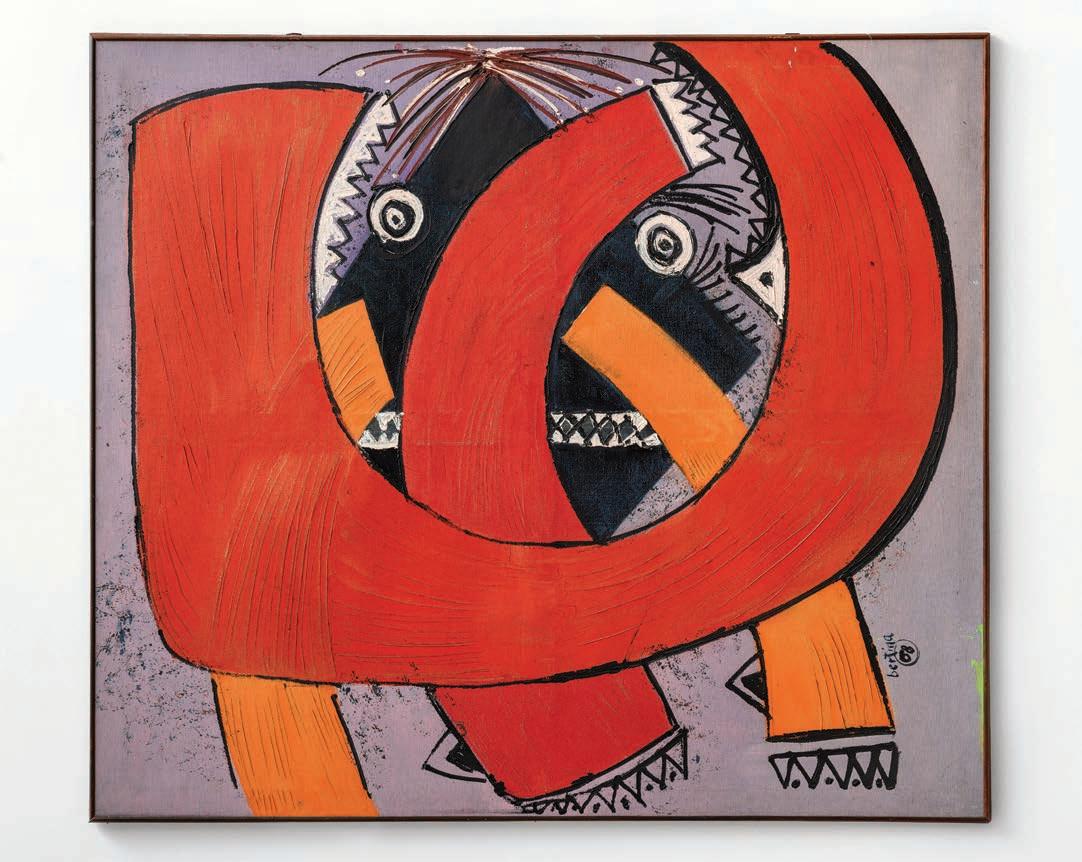
Bertina Lopes’ Totem N. 2 draws viewers in with vibrant colors and engaging abstract forms. In clear dialogue with Pablo Picasso, the work appears to deconstruct an African mask by breaking it into arcing, geometric facial planes and scattering them across the canvas. The connection to masquerade and masks is evident by both the title and the painted representation of raffia fiber in the
upper center of the canvas. Lopes is one of the most important Mozambican artistactivists of the 20th century, and Totem N. 2, 1968, acquired by the BMA last year, is an outstanding example of her innovative work during a pivotal moment in her career.
Compared to European artists like Picasso, Lopes (Mozambican, 1924-2012) has not been the subject of intense art historical study. She was born to a Mozambican mother and Portuguese father and grew up in the capital of Maputo (then-Lourenço Marques), Mozambique before moving to Lisbon, Portugal at the age of twelve. In 1953, she returned to Maputo and became involved in the anti-colonial resistance movements that were sweeping the country. Following the arrest of her first husband for political protest, Lopes fled the country and ultimately settled in Rome, Italy in 1963, where she lived and
worked for the rest of her life. She is one of the few women artists from Africa who emerged during the independence movements and continued making art decades later.
Produced during Lopes’ initial period of exile during Mozambique’s decade-long fight for independence from Portugal, Totem N. 2 reflects on her exile by incorporating references to both historic African and European modernist art. This visually arresting work is also the first major painting by an African artist purchased with the recently established The Amy Gould/ Matthew Polk Fund, which funds the purchase of African art. Totem N. 2 can be found on the first floor in the Wurtzburger Gallery for African Art.

Exhibition catalogs published by the BMA feature incredible artwork, scholarly essays, and creative writing from leading artists, curators, and writers.
Available at the BMA Shop. Members save 10% on every purchase. Visit in-person or at shop.artbma.org